|
|
|
THE
PHOTOGRAPHIC WEB GUIDE TO THE LARVAE OF CORAL REEF
FISHES:
THE 21st CENTURY |
|
|
|
|
|
|
|
|
|
|
CHECKLIST OF CARIBBEAN REEF FISH SPECIES
|
|
|
This webguide is a
work in progress, with sporadic edits and in future additional family
pages and photographs. I have started with
a few large families that account for
about a third of all reef fishes in the region: the
gobies with about 150 species, the serranids with about
100 species, the labrisomids with about 50 species,
and the chaenopsids with another 50 species. Most recent work has been
on the early life history stages of labrisomids
and chaenopsids
in more detail than before.
|
|
| Why keep my guide on the web? The main
reason is that books and papers require that information
be frozen in time: essentially a snapshot of knowledge at
a particular moment. We used to accept this as inevitable
and many of us probably don't even think about it. But it
is clear that scientific information is continuously being
updated and remodeled and it is somewhat discordant, and
certainly inefficient, to produce and package the results
in an occasional bolus. Unfortunately, most of us accept
that authors will have their additions, changes, and errata
somewhere on their desk and inaccessible (we hope only until
the next edition). Even worse, when the subject is a compendium
of information, such as a guide, authors often wait until
it is in some form "complete" before submitting it to publication.
Woe be unto the perfectionist in this case, for it may take
a lifetime for some people to decide they are ready. That
is all 20th-century thinking- there is no reason in the
age of the internet not to have a work in progress made
generally accessible. |
|
| INTRODUCTION |
| Virtually all of the thousands of species
of tropical reef fishes have a larval stage that spends
weeks to months in the open ocean before returning to the
reef to settle. This transition from pelagic larvae to settled
juveniles is a profoundly important time for reef fishes.
During this settlement transition, which usually occurs
on moonless nights, the larvae have critical decisions to
make: they need to select an appropriate habitat, avoid
the ubiquitous predators, and change their shape and color
for life on the reef. Understanding this early-life-history
process is clearly important to understanding the population
dynamics and, more broadly, the biogeography, ecology, and
evolution of coral reef fishes. |
|
| Despite
its undoubted importance, this transition
has not been comprehensively studied and one
of the reasons this may be true is the lack
of information on late-stage larvae. I have
been collecting these larvae, mostly by netting
at a nightlight directly over the reef, but
also with crest-nets and other techniques
for many years. In addition, I have focused
my daytime collecting on what some of us call
"new recruits", the recently-transformed juvenile
fishes that suddenly appear in the morning
on the reef. |
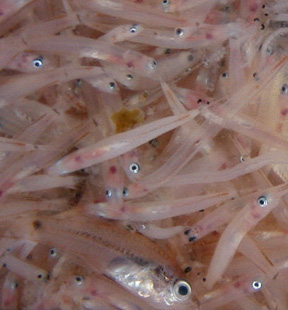 |
|
|
 |
|
| For some reason, almost all of the reef-fish
larvae I collect at a nightlight are late-stage larvae ready
to settle onto the reef. This is not an artifact of their
attraction to the light: I have towed plankton nets in the
area and I get a similar size complement of larvae. In addition,
other techniques to collect incoming larval fish, such as
crest nets, yield the same size categories of larvae. |
|
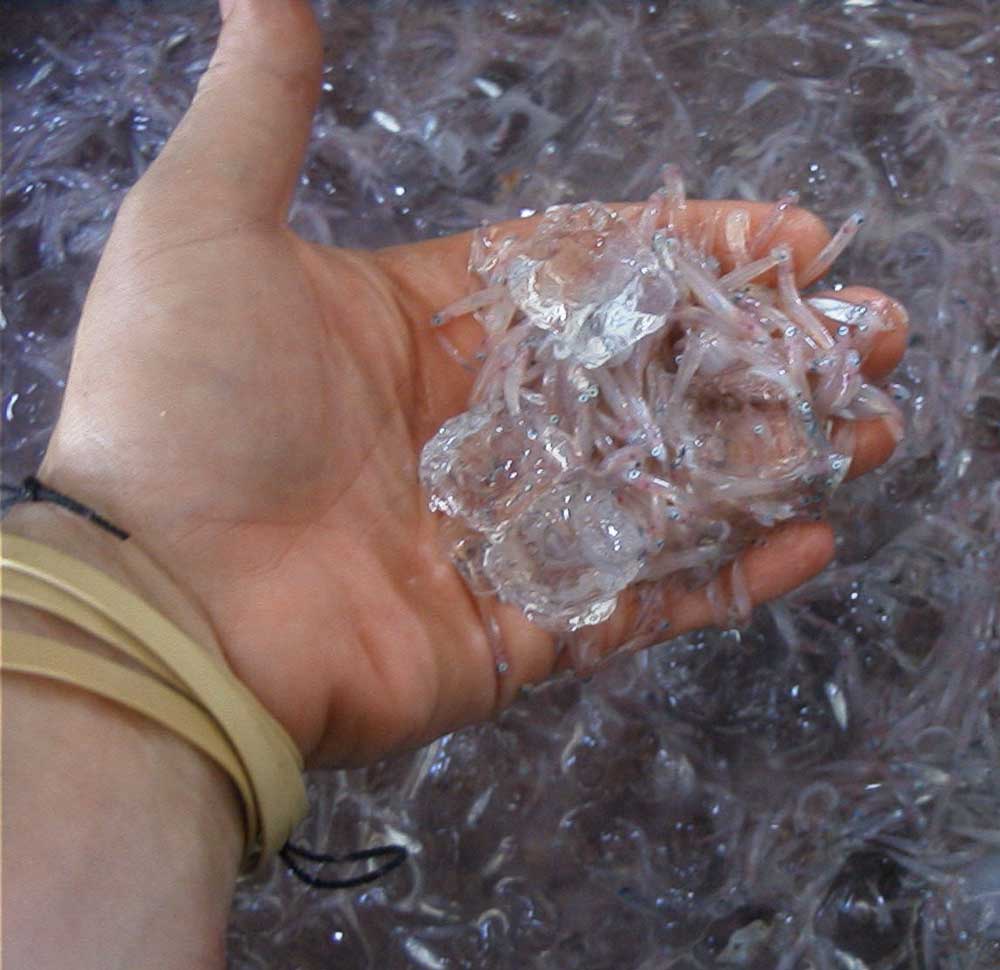
|
| The
simplest explanation for this phenomenon is
that larval fish that are ready to settle somehow
maneuver themselves into on-reef currents, perhaps
just by rising to the surface water layer. There
has been recent research indicating that reef-fish
larvae are good swimmers and can actively orient
towards reefs. Whichever way they manage it,
almost all of the larvae I capture are around
the particular settlement size range for their
species. This can be very helpful in identifying
larvae. |
|
|
| REFERENCES |
| There are a number of excellent books
on larval identification and the early life history stages
of fishes. Most include copious drawings of reef-fish
larvae and also focus on the earlier stages of fish larvae:
Jeff
Leis has multiple books with comprehensive
coverage of the Indo-Pacific species of reef and shore
fishes.
|
|
For the Atlantic, there is the massive
larval fish book edited by Bill Richards:
Richards, W.J. (2005) Early Stages Of Atlantic
Fishes: An Identification Guide For The Western
Central North Atlantic, Vols. 1 and 2
It covers pelagic fishes and deepwater fishes as well as
shore and reef species and captures the state of the art
from a few years ago. Portions of this otherwise prohibitively
expensive and hard-to-find book can be viewed on Google,
but it is stark testimony to the limitations of spreading
information with paper.
Lastly, the classic book by Michael
Fahay (1983), the
Guide to the Early Stages of Marine
Fishes Occurring in the Western North Atlantic Ocean
deals mostly with the temperate ichthyoplankton of the Atlantic
coast of the US, but with some overlap of coverage. |
 |
| USEFUL
LINKS |
|
The
Australian Museum Larval Fishes website: the center
of fish larvae knowledge for the Indo-Pacific.
the innovative egg raising and DNA sequencing ID by
the late Allan Connell for Fish Eggs and Larvae from South African
waters (fisheggsandlarvae.com).
|
| |
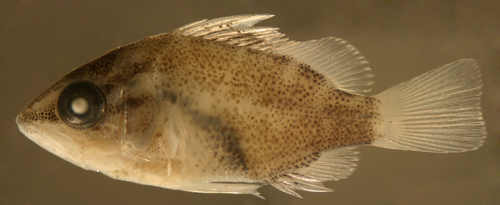 |
|
| |
 |
| THE
PHOTOGRAPHIC WEB GUIDE |
| Larval descriptions have been illustrated
with line drawings for many years and the vast majority
of books and scientific papers use line drawings almost
exclusively. There are a few benefits to the use of drawings
for early stage fishes; for example, otherwise-transparent
details such as head spines and pectoral fin rays can
be highlighted. Nevertheless, it is most likely that the
main reason for line drawings is the cost of printing
photographs and the necessity to limit the number of pages
and illustrations in the publishing process. As we all
go digital and libraries merge into central databases
and printing presses and paper go the way of the neighborhood
bookstore, the situation reverses: line drawings become
laborious and time-consuming and photographs become easily
uploaded. Line drawings may become as quaint as the watercolors
used for the illustrations in 19th century species descriptions. |
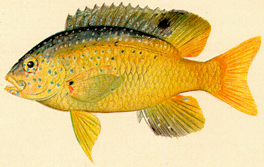 |
|
 |
|
| There are many limitations to line drawings.
Perhaps the most problematic is that melanophores (the black
spots usually prominent on fish larvae), especially small
or delicate ones, disappear against a black line drawing
and these melanophores are often the most critical element
in larval identifications. The idealization of the drawing
can also distort the real appearance of the larvae, emphasizing
outlines and de-emphasizing shading, form, and especially
color. Furthermore, there is usually marked variation in
the appearance of fish larvae, both functional (such as
melanophores expanded or pinpoint) and inherent (incomplete
melanophore complements are common). This variation among
individuals certainly argues against presenting an ideal.
In addition, the development of metamorphic markings and
morphological changes is a continuous process and it is,
of course, impossible to pick one or two images to capture
the information. |
| | Now that digital photography and web publishing has streamlined
the use of photography, it is possible to present many
illustrations of a single larval type and get around the
limitations of choosing a single or only a few diagnostic
images. I hope to emulate the actual process of identification,
which is to use a variety of views and backgrounds to
create a gestalt that quickly identifies a larval type
without following a key or character list to arrive at
a diagnosis. |
|
|

|
Along a similar vein, most of the literature to date
bravely (or is it quixotically) tries to verbally describe
larval shapes and melanophore patterns. More text is
usually favored over more illustrations, probably because
of the decreased costs of publication. This obviously
limits the amount of information captured since it is
technically impossible to render three-dimensional shapes
and patterns into words. Furthermore, the location of
markings and structures can only be given relative to
other landmarks and is always limited in precision by
the amount of text that can be printed, or even tolerated,
by a reader. I therefore will try to avoid the temptation
to add reams of description to the photographs, but
I will insert a hopefully pithy verbal description when
it is necessary to highlight relevant features.
|
|
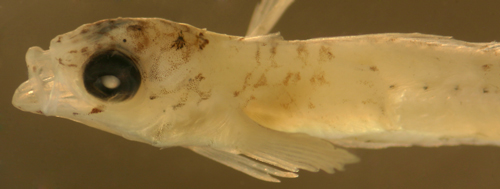 |
| I present the photographs of larvae usually
with a dark background, sometimes along with a matched photo taken
against a light background so that the black melanophore pattern,
and especially internal melanophores, can be seen. Photographs
against dark backgrounds, like line drawings, can hide the small
or edge melanophores that are often diagnostic for larval types.
I also include detail photographs on pertinent features of the
larvae that may be critical to identification or of specific interest.
If there are transitional forms of interest, photographs of those
are included. I also hope to add images of new recruits, especially
for those groups with many similar species and distinctive juvenile
markings. |
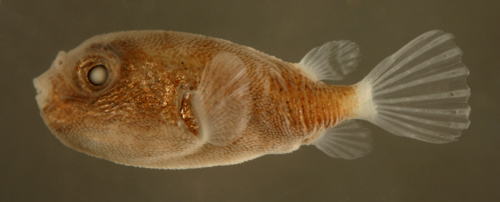 |
| THE
DEFINITION OF LARVAE |
| Please
note that most reef-fish biologists use the loose
definition of the word "larvae", i.e. the stages
of development before settlement to the reef, if
they show a morphological difference from settled
juveniles. |
|
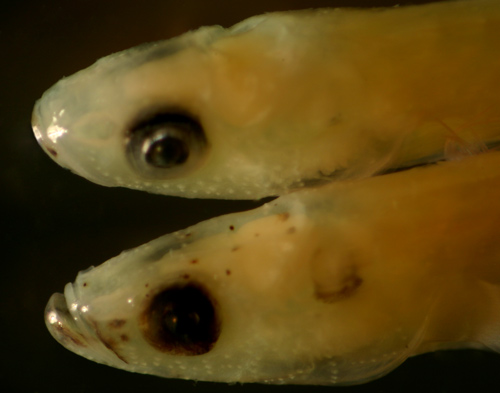 |
| This definition of early stage fishes
excludes the pelagic juveniles of some species who are typically
indistinguishable from reef-based juveniles and often float
with drift objects: these fishes have essentially settled
onto a drifting platform. As one can imagine, the few species
that do this regularly are annoying to us mainly because
they defy the usual interpretations of what defines "larvae",
"settlement", and "pelagic larval duration". Reef fishes
in this category include the Sargassum
algal drift-associated juveniles, to some degree or another:
the damselfishes of Abudefduf and Chromis
(Pomacentridae), triggerfishes (Balistidae), filefishes
(Monacanthidae), barracudas (Sphyraenidae), tripletails
(Lobotidae), pipefishes and seahorses (Syngnathidae), and
needlefishes (Belonidae). |
|
|
| Another intriguing discovery is the occasional
pelagic adult reef fish. This is new information and may explain
the sometimes contradictory findings of the degree of larval dispersal
derived from study of larval pelagic durations versus the observed
degree of gene flow in phylogenetic studies. The elusive pelagic
adult is quite intriguing, and I hope to pursue this curious creature
in future expeditions. Several sources of information indicate
that this is happening, although to what degree is completely
unknown. The original observation was by Ross
Robertson who saw adults of the slingjaw wrasse, Epibulus
insidiator, rising off of reefs and drifting away offshore
(in Palau, a part of Micronesia, in the Western Pacific). Then
there have been records of the rare adult reef fish caught in
light traps far offshore (reports from the Great Barrier Reef)
and observations of adult reef parrotfishes in schools in pelagic
waters far from reefs (Enric Sala reports from diving in Cuba). |
|
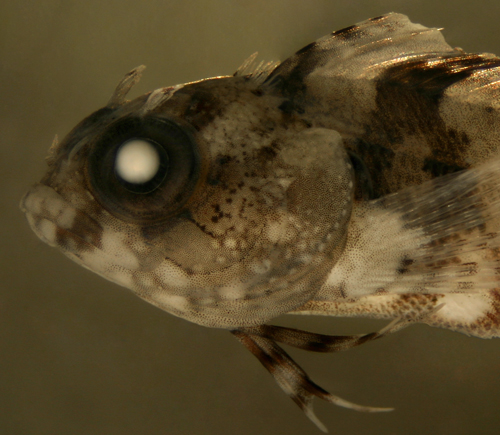 |
| The significance of this phenomenon
is unknown. Perhaps it is a way of relocating among reef
systems for more advantageous feeding or reproduction, although
this would require that the likelihood of returning to a
reef outcrop be greater than the likelihood of being eaten
by a tuna... somewhat hard to imagine. Alternatively, some
pelagic adults may not be reef emigrants, but could be lost
pelagic juveniles approaching maturity, perhaps associated
with drift structure for protection, and haplessly waiting
for a chance encounter with a reef. Larval mortality schedules
must have a tail to the distribution and thus permit some
small but real fraction of pelagic larvae to persist through
transformation (if obligatory at some point) and even grow
to adulthood offshore. |
|
|
| HOW DO
I IDENTIFY REEF FISH LARVAE? |
| This is perhaps the most common
question I am asked, since there is a bewildering variety of
fish larvae in almost any collection. In addition, the possible
candidates for any particular larva in the Caribbean or the
eastern Pacific include a thousand reef-fish species, and perhaps
another thousand other shorefish species and deepwater, midwater,
and pelagic fishes as well. That total rises to many thousands
as one approaches the center of diversity near Indonesia in
the central Indo-Pacific. Fortunately, larval fishes, especially
at later stages, are not uniform or even broadly similar; in
fact, they can often have even more divergent characters than
do the adults. For example, virtually all reef fishes have round
eyes after settlement, while their larvae can have widely-varying
eye morphologies, often narrowed or tilted and sometimes exhibiting
bizarre shapes. |
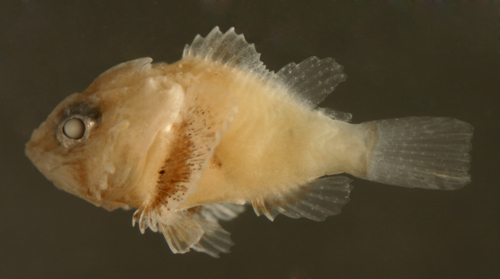 |
|
| In addition, some taxa have larvae with greatly-extended
fin spines or rays, sometimes many times longer than the larva
itself. There is also a great diversity in spine development,
with many larvae having complex spine ornamentation on the head
or fins, often lost or inconspicuous on adults. Finally, an important
character at higher taxonomic levels for fishes is the number
of myomeres, the muscle segments making up the body. These are
hidden under pigment and skin in juvenile and adult fishes, but
are clearly obvious and countable in most larval fishes. |
|
| Some
taxa fortunately develop the typical juvenile appearance as late-stage larvae
and are thus easy to identify from known-juvenile markings and coloration. Typically
these larvae still do show some subtle adaptations to pelagic life, often a silvery
sheen and shades of black, gray and brown or red instead of the usual bright colors.
Red does not penetrate seawater well and would appear gray, especially in low-light
conditions. Examples of fishes using this strategy include the angelfishes (Pomacanthidae),
the butterflyfishes (Chaetodontidae),
and the squirrelfishes (Holocentridae). A larval Pomacanthus arcuatus,
only 8.2 mm SL, is pictured at right. |
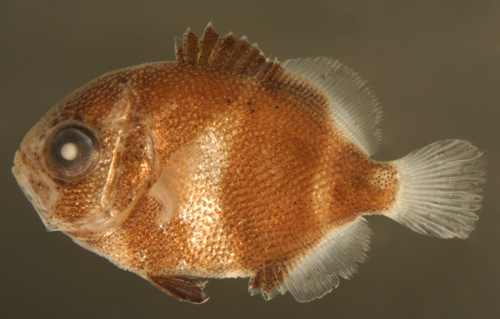 |
|
|
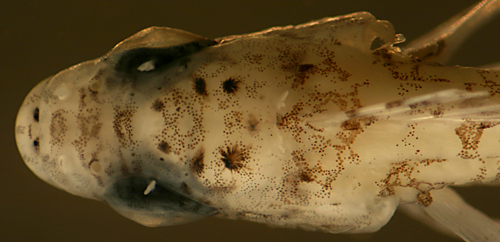 |
|
| Others live among drift algae and are camouflaged
by markings similar, but not identical, to those of settled juveniles.
The camouflage is an adaptation to avoid being eaten by the ubiquitous
pelagic predators which target floating objects in the open ocean,
such as tunas and mahi-mahi (dolphinfish). Larvae following this
strategy include some pipefishes and seahorses (Syngnathidae),
triggerfishes (Balistidae), and filefishes (Monacanthidae). |
|
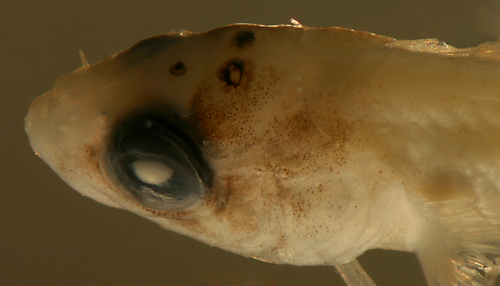 |
|
| Identification to genus and species
in larvae with a more generic appearance can be much more difficult.
Most generic types of reef fish larvae are transparent and very
small and, while they are alive, look just like tiny slivers
of glass with eyes. When there are just a few genera or species
in a group, the fin-ray counts are usually diagnostic to species.
In some of the more speciose groups with large sets of closely
related species, such as the gobies (Gobiidae)
and the gobioids (Gobioidei),
the scaled blennies (Labrisomidae),
the snappers (Lutjanidae),
the seabasses and groupers (Serranidae),
as well as parrotfishes (Scaridae),
wrasses (Labridae),
and some damselfishes (Pomacentridae),
the number of possible species can be overwhelming and I have
to resort to some other method of identification. There are
a variety of ways to do this, some simple and some using the
latest molecular techniques. |
|
|
| | FIRST,
USE THE PROCESS OF ELIMINATION... | | Most
reef fish larvae do resemble juveniles and adults in basic form, and, especially,
in the number of fin spines and rays and myomeres. This is the primary method
of identification for early life history stages and works almost all the time
for family, most of the time for genus, and often for species. |
| | Of
course, this is essentially a process of elimination and it is much easier in
the Caribbean, with only a few hundred possible candidates, versus the Indo-Pacific
where there can be thousands of reef fish species occurring at one particular
site. The eastern Pacific region is generally similar to the Caribbean in numbers
of reef fish species. The majority of my specimens are Caribbean, most from the
San Blas Islands of Panama, so I will start developing the guide for these fishes.
Other Caribbean sites from which I have collected include Belize, Puerto Rico,
and St. Thomas. I have also collected fishes at the Brazilian island of Fernando
de Noronha, where there is an unusual complement of reef fishes, some endemic
and some widespread Caribbean forms. | 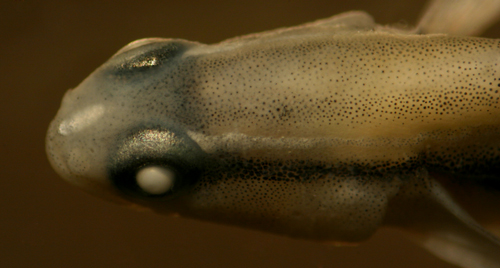 |
|
|
|
|
| A particularly useful variant of
the process of elimination is the examination of fishes from isolated
regions where only a subset of the group is present (i.e. depauperate
locations). This is a very useful method in some groups where
the larvae of similar species can be very difficult to separate.
For example, there are numerous very similar gobies of
Coryphopterus in the Caribbean, but only one species
occurs on the island of Noronha far off the coast of Brazil. |
|
| Another useful variant is
using the similarity with sibling species in the eastern
Pacific Ocean to refine the process of elimination. When
identifications of larval types becomes difficult because
there are several Caribbean species that all share fin ray
counts, the situation may be different on the Pacific side
of Central America. The isthmus of Panama rose about three
million years ago, and there are numerous reef fish genera
with species on both sides of the isthmus, often as very
similar species pairs or "sibling species". |
| On the
other hand, some genera occur on only one side, and the
presence (or even absence) of a particular larval type onone
side or the other can contribute to the process of elimination
and confirm an identification. For example, the sleeper
Erotelis
smaragdus shares its fin ray counts with other Caribbean
sleepers, making it a problem for identification. But, in
the eastern Pacific, the sibling species Erotelis armiger
has a unique fin ray count among the eastern Pacific sleepers. |
 |
|
I now have collected a series of sleeper larvae with that
fin ray count from near the Galapagos Islands, and they
are almost identical to the putative Erotelis
smaragdus larval type... thus confirming the identification
for the Caribbean larval type. Another example is an unusual
Caribbean goby larval type with a fin ray count matching
several Ctenogobius,
but also the monotypic Evorthodus
lyricus. Again, I have collected an identical larval
type from the eastern Pacific Ocean, where, fortuitously,
there are only two Ctenogobius species (neither of
which match the fin ray count), but there exists the sibling
of the Caribbean Evorthodus species, Evorthodus
minutus, with the appropriate fin ray count. That nicely
confirms the identification of the Caribbean larval type
as Evorthodus
lyricus. |
|
|
|
| | |
| THEN,
LOOK FOR MISSING LINKS (TRANSITIONAL LARVAE AND TRANSITIONAL RECRUITS) |
| On
close examination, many larval types have
very characteristic and remarkably consistent
patterns of melanophores. Often, they also
have specific patterns of other chromatophores.
Pigment cells in fishes include the classic
melanophores which comprise black and brown
spots, iridophores which are mirror-like spots
that simply reflect light and often appear
silvery, leukophores which are white, and
xanthophores which range from yellow to orange
to red. Unfortunately xanthophore pigments
dissolve rapidly in solvents and are not usually
preserved. |
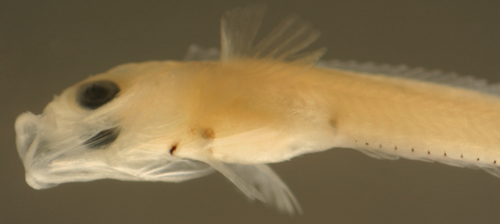 |
| |
 |
Now
why would these markings be so prominent and so specific? I think pelagic larvae
use these for species identification. Perhaps they prefer to travel together while
in the open ocean and settle together. I have noticed that sometimes several new
recruits of a particularly uncommon species will show up on the same rock on the
same morning, with no other recruits for miles around. Interesting.... |
| |
|
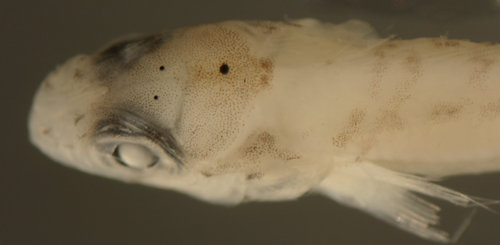 |
Fortunately,
in most reef fishes the larval markings are quite different from the juvenile
markings. Larval melanophores are typically large, often stellate, individual
black spots that extend below the skin surface. These markings are replaced during
the settlement transition by metamorphic melanophores in the patterns shown by
juveniles on the reef. These arrays of additional melanophores (and sometimes
leukophores and iridophores), are usually much smaller and right at the skin surface.
In addition, they are typically numerous and in dense patches that often begin
on the head and develop posteriorly following the pattern of the juvenile markings
of the species. This transitional larva of a scaled blenny (Labrisomidae) shows the
prominent three larval melanophores surrounded by the patches of fine metamorphic
melanophores. In many species, this transition can take days and often the larval
markings coexist with the developing juvenile patterns. These metamorphic melanophores
are invaluable for identifications. |
| 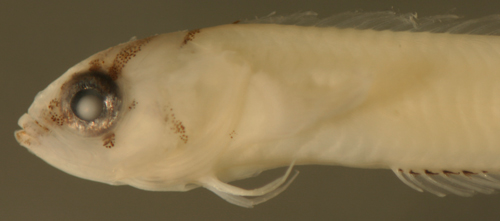 |
| So
an excellent method of identifying larvae is to find the occasional pelagic larva
that has started to transform and is developing the characteristic juvenile markings
while still in the water column. Alternatively, I often have collected new recruits
on the reef that still have some identifiable larval melanophore patterns, i.e.
transitional recruits. Both of these forms
of missing links can indicate what species that type of larvae represents. |
|
|
| THE GOLD STANDARD:
DNA SEQUENCE MATCHING |
| The most recent advance is the use of DNA
sequencing to identify larvae. This technique is rapidly becoming
the gold standard for larval identification. Once a library of
sequences is known for a group of species, then individual larvae
can be sequenced and matched to the known species. This method
requires a full set of species-specific sequences for a taxon,
which is not always easy to assemble. Nevertheless, the Barcode
of Life Project has rapidly accumulated a large set of fish
reference sequences as part of the FISH-BOL campaign, in the BOLD
database, at present about 75% complete for the tropical W.
Atlantic shorefish fauna. Mitochondrial DNA sequence matching
has resolved some of the more tricky ID situations, such as the
damselfishes of Stegastes,
the labrids of Halichoeres,
the parrotfishes of Sparisoma,
the snappers of Lutjanus,
and the gobies of Bathygobius,
Lythrypnus,
and Coryphopterus.
In addition to confirmatory IDs, sequence analyses are wonderful
tools for discovering new and/or cryptic species; indeed, a number
of recent publications have documented the additional new species,
especially among the blennioids and gobies. Another benefit of
sequencing reef fishes is discovering surprising and unexpected
patterns of relatedness (although a long list of caveats should
follow: "phylogenetic relationships require multiple loci
and appropriate statistical analyses to ensure any robustness!").
My sequences for the labrids confirmed (in agreement with other
published trees) that Halichoeres
maculipinna is only distantly related to the other Halichoeres
species and may be closer to the Thalassoma.
In addition, with collections over wide geographic ranges, one
can assess the degree of genetic divergence of isolated island
populations. My sequences reveal that this divergence sometimes
seems to show little relation to the duration of the pelagic larval
phase. I cannot really explain this counter-intuitive finding
and it surely indicates that the relationship between dispersal
and speciation is not a simple one (to say the least). Clearly,
a plethora of profound insights are about to arrive with the advent
of widescale DNA sequencing of reef fishes. |
|
|
| FINALLY, AQUARIUM
RAISING OF LARVAE |
| Another method is to isolate
the wild-caught larva and raise it in an aquarium tank until
it develops identifiable juvenile markings. This method can
be labor intensive and requires the larva not to be so delicate
that it dies from handling. In addition, there is a piscine
Heisenberg Uncertainty Principle, which is that one cannot keep
the larva in preservative and also raise it alive. If it is
possible to examine the living larva close enough (and even
photograph it) and then raise it, an identification can be made. |
|
| An
alternative, although much more intensive
and expensive, method to document the early
life history of reef fishes is to raise the
fish from the egg through the larval period
in the laboratory. This is being achieved
more recently as techniques for feeding notoriously
delicate reef fish larvae are perfected (see
for example the Red Snapper, Lutjanus
campechanus).
There are some indications, however, that
laboratory-raised larvae may look somewhat
different from "real" larvae since they are
certainly living in unnatural conditions and
may grow at different rates. In addition,
they would be undoubtedly confused as to when
and whether they should enter transition. |
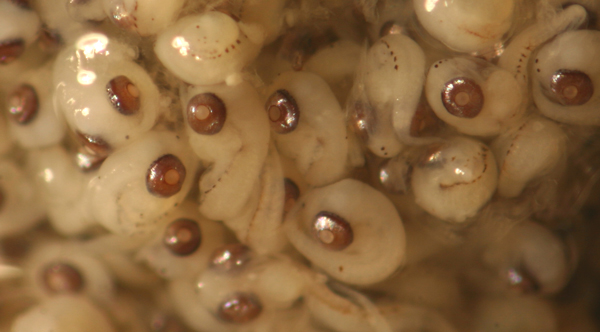 |
|
|
| TERMINOLOGY
AND LAYOUT OF LARVAL IDENTIFICATIONS IN THE GUIDE |
| Identifications will be
presented to the lowest taxonomic level of which I am reasonably
sure. A question mark after the genus or species name indicates
that I am not reasonably sure of the identification. This could
mean that the identification is simply of the most likely species
without any other good reason to choose it, or, less commonly,
that the identification fits by some criterion but I am suspicious
because it doesn't "look right". Some larval types may, of course,
include other closely-related species that have identical larval
features. If this is the case, it will be indicated by a plus
sign after the species name. If the features of the larval type
are unique, or all of the related species sharing the fin ray
counts are accounted for, then there will be no plus sign.
|
|
| Diagnosis:
If necessary, I explain how the identification is
made in a diagnosis paragraph. The critical features
for the ID are highlighted. If it is needed, the
methods I have used for larval identification, such
as unique and specific morphology or fin ray counts
(U), the process of elimination (PE), DNA sequence
matching (DNA), or raising in captivity (R) are
indicated at the end of the diagnosis paragraph. |
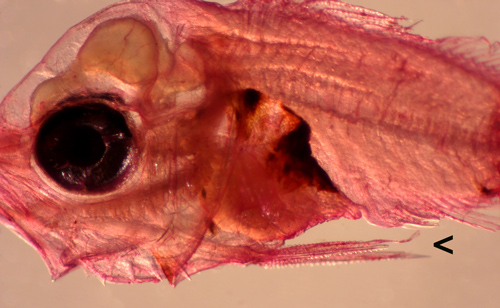 |
|
|
Analogues: For most larval descriptions,
the diagnosis paragraph is sufficient to separate
larval types, but, for some groups of species with
similar-appearing larvae, such as the gobies, I
often include an additional paragraph on how that
larval type can be separated from other closely-allied
larvae. |
| |
|
Terminology: In the text, larvae are immature
fishes caught in waters above or off the reef (usually
at night), typically with adaptations to open ocean
dwelling, such as transparency or silvery coloration,
extended spines and often a different set of markings
from juveniles of the species. Transitional larvae
are immature fishes caught in waters above or off
the reef (also usually at night) who have started
to develop juvenile markings and morphology. Transitional
recruits are fishes associated with the reef substrate
who have retained remnants of larval markings along
with their juvenile markings and morphology. They
typically are out during the day and behave as normal
juveniles. Recruits are newly-settled fishes associated
with the reef substrate (let's say less than a couple
of weeks on the reef). Juveniles are young fishes
on the reef who are no longer newly-settled. |
| |
| Each
photograph is associated with a caption including
the identification to the lowest taxonomic level
possible, the standard length (SL) in millimeters
of the specimen, as well as the collection location
and collection code number. Lastly, important features
that need to be highlighted in the illustration
are often included in parentheses following the
collection information. The data associated with
the collection numbers (specific location, date,
etc.) can be found in my inventory
files, which are progressively being updated and
posted to the web. |
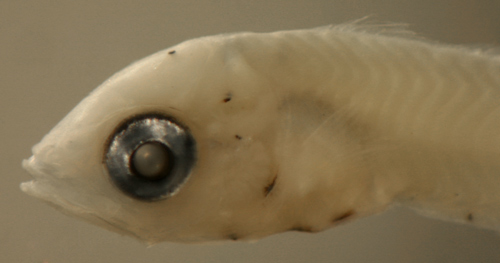 |
| |
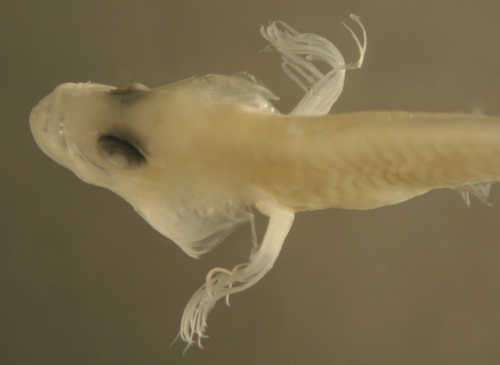 |
PERMISSIONS |
| My photographs are freely available for reproduction
and use in non-commercial applications. Please e-mail me for
permissions, if warranted (e-mail ben followed by at sign, then
coralreeffish.com). The web versions posted here are mostly
about 500 pixels wide and run from 20 to 120 kb. I have larger
resolution versions, usually about 1.5 mb jpegs, available for
uses that require better resolution. |
| |
|
|
|
THE CARIBBEAN REEF FISH SPECIES LIST
(including the Gulf of Mexico)
|
|
|
Fish families following Randall's book,
but with updated, expanded, and revised species lists
excluding elasmobranchs
including numerous species found in non-reef
habitats (if the family has reef-associated members)
but sometimes excluding sets of deep-water
species (over ~30 m depth)
|
|
|
|
FAMILIES
|
| (click on
the family name to jump down to species list) |
|
Elopidae Megalopidae
Albulidae Clupeidae
Engraulidae
Synodontidae
Anguillidae
Heterenchelyidae
Moringuidae
Chlopsidae
Muraenidae
Muraenesocidae
Ophichthidae
Congridae Antennariidae
Ogcocephalidae
Gobiesocidae
Ophidiidae
Bythitidae
Carapidae Batrachoididae
Belonidae Hemiramphidae
Atherinidae
Atherinopsidae
Fistulariidae
Aulostomidae
Syngnathidae
Anomalopidae
Holocentridae
Scorpaenidae
Dactylopteridae
Triglidae Serranidae
Grammatidae
Centropomidae
Priacanthidae
Apogonidae
Malacanthidae
Cirrhitidae
Mugilidae Sphyraenidae
Polynemidae
Rachycentridae
Echeneidae
Carangidae
Scombridae
Lutjanidae
Haemulidae
Inermiidae Sparidae
Sciaenidae
Mullidae
Pempheridae Lobotidae
Gerreidae Kyphosidae
Ephippidae
Bothidae Paralichthyidae
Achiridae Cynoglossidae
Chaetodontidae
Pomacanthidae
Pomacentridae
Labridae Scaridae
Opistognathidae
Blenniidae
Labrisomidae
Chaenopsidae
Tripterygiidae
Dactyloscopidae
Gobiidae Ptereleotridae
Eleotridae
Microdesmidae
Callionymidae
Acanthuridae
Balistidae
Monacanthidae
Ostraciidae
Tetraodontidae
Diodontidae
|
|
|
FAMILY ELOPIDAE
|
Elops saurus Ladyfish
(US coastline to N Florida and Gulf of Mexico)
Elops smithi Caribbean Ladyfish (new cryptic species
found in the Caribbean and S Florida) |
|
|
FAMILY MEGALOPIDAE
|
| Megalops atlanticus
Tarpon |
|
|
FAMILY ALBULIDAE
|
Albula conorhynchus
(extra species aff. vulpes in Caribbean)
Albula goreensis (the "garcia"
form, widespread Florida and Caribbean)
Albula nemoptera Threadfin bonefish (estuarine)
Albula vulpes Bonefish |
|
|
FAMILY CLUPEIDAE
|
|
Alosa alabamae Alabama shad (anadromous, Gulf
of Mexico)
Alosa chrysochlorus Skipjack shad (anadromous,
Gulf of Mexico)
Brevoortia gunteri Finescale menhaden (Gulf of
Mexico)
Brevoortia patronus Gulf menhaden (Gulf of Mexico)
Brevoortia smithi Yellowfin menhaden (Gulf of Mexico)
Chirocentrodon bleekerianus Dogtooth herring (Pristigasteridae)
Dorosoma anale Mexican river gizzard shad (freshwater,
Mexico to Belize)
Dorosoma cepedianum Gizzard shad (anadromous, Gulf
of Mexico)
Dorosoma petenense Threadfin shad (anadromous,
Gulf of Mexico to Belize)
Etrumeus teres Round herring
Harengula clupeola False herring
Harengula humeralis Redear herring
Harengula jaguana Scaled herring
Jenkinsia lamprotaenia Dwarf round herring
Jenkinsia majua Little-eye round herring (N. Caribbean)
Jenkinsia parvula Shortstriped round herring (NE
Venezuela)
Jenkinsia stolifera Shortband or Florida round
herring (widespread)
Lile piquitinga Atlantic piquitinga (Panama to
Brazil)
Neoopisthopterus cubanus Cuban longfin herring
(Cuba only?, Pristigasteridae)
Odontognathus compressus Caribbean longfin herring
(Southern Caribbean, Pristigasteridae)
Odontognathus mucronatus Guiana longfin herring
(Trinidad and south, Pristigasteridae)
Opisthonema oglinum Atlantic thread herring
Pellona harroweri Coastal pellona (Panama to Brazil,
Pristigasteridae)
Sardinella aurita Round sardinella, Spanish sardine
(Atlantic Ocean)
Sardinella janeiro (unresolved how it is different
from S. aurita, widespread; S. brasiliensis
is synonym)
|
|
|
FAMILY ENGRAULIDAE
|
|
Anchoa belizensis Belize anchovy (freshwater,
Belize)
Anchoa cayorum Key anchovy
Anchoa colonensis Narrow-striped anchovy (Caribbean
only, replaces A. hepsetus)
Anchoa cubana (widespread)
Anchoa filifera Longfinger anchovy
Anchoa hepsetus Broad-striped anchovy (Gulf of
Mexico northwards, Venezuela southwards)
Anchoa lamprotaenia Big-eye anchovy
Anchoa lyolepis Shortfinger anchovy
Anchoa mitchilli Bay anchovy (Gulf of Mexico northwards)
Anchoa parva Little anchovy (Caribbean only, replaces
A. mitchilli)
Anchoa spinifer Spicule anchovy (Panama to Brazil)
Anchoa trinitatus Trinidad anchovy (Gulf of Venezuela
to Trinidad)
Anchovia clupeoides Zabaleta anchovy
Anchoviella blackburni (Gulf of Venezuela only)
Anchoviella elongata Elongate anchovy (Belize to
Panama and Colombia)
Anchoviella perfasciata (widespread)
Cetengraulis edentulus Atlantic anchoveta
Engraulis eurystole Silver anchovy (Florida northwards
and Venezuela southwards)
Lycengraulis grossidens Atlantic sabretooth anchovy
(Gulf of Venezuela eastward plus Belize)
|
|
|
FAMILY SYNODONTIDAE
|
Saurida brasiliensis
Largescale lizardfish
Saurida caribbaea Smallscale lizardfish
Saurida normani Shortjaw lizardfish
Saurida suspicio Suspicious lizardfish
Synodus bondi
Synodus foetens Inshore lizardfish
Synodus intermedius Sand diver
Synodus macrostigmus (US and GOM, new sp. 2013)
Synodus poeyi Offshore lizardfish
Synodus saurus Atlantic lizardfish (Bermuda, Bahamas,
NE Caribbean and E Atlantic)
Synodus synodus Diamond lizardfish (E and W Atlantic)
Trachinocephalus myops Snakefish (worldwide warmer
water, except E Pacific)
|
|
|
FAMILY ANGUILLIDAE
|
| Anguilla rostrata
Freshwater eel (pelagic larvae in the region) |
|
|
FAMILY HETERENCHELYIDAE
|
| Pythonichthys sanguineus |
|
|
FAMILY MORINGUIDAE
|
Moringua edwardsi
Spaghetti eel
Neoconger mucronatus
|
|
|
FAMILY CHLOPSIDAE
|
| (excluding several deep-water
taxa from 20-500 m depth)
Catesbya pseudomuraena (Bahamas)
Chilorhinus suensonii Seagrass eel
Kaupichthys hyoproroides False moray
Kaupichthys nuchalis Collared eel
|
|
|
FAMILY MURAENIDAE
|
| Anarchias similis
Pygmy eel
Channomuraena vittata Broadbanded moray
Echidna catenata Chain moray
Enchelycore anatina Fangtooth moray (deep-water,
Florida, Bermuda)
Enchelycore carychroa Chestnut moray
Enchelycore nigricans Viper moray
Gymnothorax conspersus Saddled moray (deep-water)
Gymnothorax funebris Green moray
Gymnothorax hubbsi Lichen moray (deep-water, Cuba
north)
Gymnothorax kolpos Blacktail moray (Gulf of Mexico
north)
Gymnothorax maderensis Sharktooth moray (deep-water)
Gymnothorax miliaris Goldentail moray
Gymnothorax moringa Spotted moray
Gymnothorax nigromarginatus Blackedge moray (Gulf
of Mexico to Honduras)
Gymnothorax ocellatus Mottlemargin moray
Gymnothorax polygonius Polygon moray
Gymnothorax saxicola Honeycomb moray (Gulf of Mexico
north)
Gymnothorax vicinus Purplemouth moray
Monopenchelys acuta Redface eel
Muraena retifera Reticulate moray
Muraena robusta Stout moray
Uropterygius macularius Marbled moray
|
|
|
FAMILY MURAENESOCIDAE
|
|
Cynoponticus savanna Pike-conger
|
|
|
FAMILY OPHICHTHIDAE
|
| (excluding numerous deep-water
taxa from 20-500 m depth)
Ahlia egmontis Key worm eel
Aplatophis chauliodus Tusky eel
Aprognathodon platyventris Stripe eel
Apterichtus ansp Academy eel
Apterichtus kendalli Finless Eel (Florida, Bahamas,
Venezuela)
Bascanichthys bascanium Sooty eel (Gulf of Mexico
and Florida north)
Bascanichthys inopinatus (Puerto Rico +?)
Bascanichthys scuticaris Whip eel (Gulf of Mexico
and Florida north)
Callechelys bilinearis Twostripe snake eel
Callechelys guineensis Shorttail snake eel
Echiophus intercinctus Spotted spoon-nose eel
Echiophus punctifer Stippled spoon-nose eel
Ichthyapus ophioneus Surf eel
Myrichthys breviceps Sharptail eel
Myrichthys ocellatus Goldspotted eel
Myrophis anterodorsalis Longfin worm eel
Myrophis platyrhynchus Broadnose worm eel
Myrophis punctatus Speckled worm eel
Ophichthus cruentifer Margined Snake Eel (US, GOM, Venezuela)
Ophichthus cylindroideusTentacle-nosed Snake Eel (S. Caribbean)
Ophichthus gomesii Shrimp Eel
Ophichthus hyposagmatus Faint-saddled Snake Eel
Ophichthus melanoporus Spotted Snake Eel (Florida & GOM)
Ophichthus omorgmus Dotted-line Snake Eel (GOM)
Ophichthus ophis Spotted Snake Eel
Ophichthus puncticeps Palespotted Snake Eel
Ophichthus spinicauda Spikefin Snake Eel
Ophichthus rex Giant Snake Eel (Gulf of Mexico)
Quassiremus ascensionis Black-spotted snake eel
|
|
|
FAMILY CONGRIDAE
|
| (excluding numerous deep-water
taxa from 20-500 m depth)
Ariosoma anale Longtrunk conger
Ariosoma balearicum Bandtooth conger
Conger esculentus Grey conger
Conger oceanicus American conger (Gulf of Mexico,
north)
Gorgasia sp. (larvae only, Western Caribbean)
Heteroconger longissimus Garden eel
|
|
|
FAMILY ANTENNARIIDAE
|
|
Antennarius bermudensis Island frogfish
Antennarius multiocellatus Longlure frogfish
Antennarius ocellatus Ocellated frogfish
Antennarius pauciradiatus Dwarf frogfish
Antennarius striatus Striated frogfish
Histrio histrio Sargassumfish (worldwide tropical,
except E Pacific)
|
|
|
FAMILY OGCOCEPHALIDAE
|
|
(excluding some deep-water taxa from 40-1000 m depth)
Halieutichthys aculeatus Pancake batfish
Ogcocephalus corniger Longnose batfish (Gulf of
Mexico and Florida)
Ogcocephalus cubifrons (Yucatan across to Bahamas)
Ogcocephalus declivirostris Slantbrow batfish (Gulf
of Mexico and Florida)
Ogcocephalus nasutus Shortnose batfish (widespread)
Ogcocephalus notatus (Surinam south)
Ogcocephalus pantostictus (Gulf of Mexico)
Ogcocephalus parvus Roughback batfish
Ogcocephalus pumilis
Ogcocephalus radiatus Polka-dot batfish (synonym
of O. cubifrons?)
Ogcocephalus rostellum
Ogcocephalus vespertilio Seadevil
|
|
|
FAMILY GOBIESOCIDAE
|
|
Acyrtops amplicirrus
Acyrtops beryllinus Emerald clingfish
Acyrtus artius
Acyrtus rubiginosus Red clingfish
Arcos macrophthalmos (=Arcos nudus?)
Derilissus altifrons (Antilles, deep reefs)
Derilissus kremnobates (Arrowsmith bank, >100m)
Derilissus nanus (Bahamas, deep reefs)
Derilissus vittiger (Venezuela, >50m)
Gobiesox barbatulus (Belize and Brazil only?)
Gobiesox lucayanus (Bahamas)
Gobiesox nudus (lower FW drainages of S Caribbean,
Antilles)
Gobiesox nigripinnis
Gobiesox punctulatus
Gobiesox strumosus Skilletfish
Rimicola brevis (= Acyrtops amplicirrus?)
Tomicodon briggsi (Belize, Grenadines, USVI)
Tomicodon clarkei (Belize holotype only)
Tomicodon cryptus (Cayman, Providencia, Bahamas
& Antilles)
Tomicodon fasciatus Barred clingfish (USVI, Panama,
Venezuela)
Tomicodon lavettsmithi (inshore Belize)
Tomicodon leurodiscus (Lesser Antilles)
Tomicodon reitzae (widespread)
Tomicodon rhabdotus (Lesser Antilles)
Tomicodon rupestris (Belize & San Andres across
to Bahamas & USVI)
|
|
|
FAMILY OPHIDIIDAE, SUBFAMILIES BROTULINAE
AND NEOBYTHITINAE
|
| (excluding numerous deep-water
taxa from 20-8000 m depth)
Brotula barbata
Petrotyx sanguineus
|
|
|
FAMILY OPHIDIIDAE, SUBFAMILY OPHIDIINAE
|
| (excluding numerous deep-water
taxa from 20-500 m depth)
Lepophidium brevivarbe
Ophidion beani (Florida and Gulf of Mexico)
Ophidion grayi (Florida and Gulf of Mexico)
Ophidion holbrookii (= Ophidion holbrooki)
Ophidion josephi (Florida and Gulf of Mexico)
Ophidion lagochila
Ophidion marginatum
Ophidion nocomis (Antilles)
Ophidion selenops (Florida and Gulf of Mexico)
Ophidion welshi (Florida and Gulf of Mexico, incl.
Ophidion marginatum?)
Otophidium chickcharney (Bahamas)
Otophidium dormitator
Otophidium omostigma (= Otophidium omostigmum)
Parophidion schmidti
|
|
|
FAMILY BYTHITIDAE
|
| (excluding numerous deep-water
taxa from 20-2000 m depth)
Calamopteryx goslinei (Antilles)
Dinematichthys minyomma
Grammonus claudei Reef-cave brotula
Gunterichthys longipenis Gold brotula (Gulf of
Mexico)
Lucifuga dentata (Cuban caves)
Lucifuga simile (Cuban caves)
Lucifuga spelaeotes New Providence cusk eel (Bahamas
caves)
Lucifuga subterranea (Cuban caves)
Lucifuga teresinarum (Cuban caves)
Ogilbia boehlki
Ogilbia cayorum Key brotula
Ogilbia jeffwilliamsi
Ogilbia mccoskeri
Ogilbia sabaji
Ogilbia suarezi
Ogilbia tyleri
Ogilbichthys ferocis
Ogilbichthys haitiensis
Ogilbichthys kakuki
Ogilbichthys longimanus
Ogilbichthys microphthalmus
Ogilbichthys puertoricoensis
Ogilbichthys tobagoensis
|
|
|
FAMILY CARAPIDAE
|
|
Carapus bermudensis
Echiodon dawsoni Chain pearlfish (deep-water,
eastern Gulf of Mexico)
Snyderia canina (deep-water)
|
|
|
FAMILY BATRACHOIDIDAE
|
| (excluding some deep-water
taxa from over 100 m depth)
Amphichthys cryptocentrus (Panama to Brazil)
Amphichthys hildebrandi (Panama)
Batrachoides gilberti (coastal, Yucatan to Panama)
Batrachoides manglae (Venezuela)
Batrachoides surinamensis (coastal, Honduras south
to Brazil)
Opsanus beta (Florida, Bahamas, and Gulf of Mexico)
Opsanus dichrostomus (coastal, western Caribbean)
Opsanus pardus (Gulf of Mexico)
Opsanus phobetron (Bahamas, Cuba)
Opsanus tau (Florida north)
Porichthys pauciradiatus
Porichthys plectrodon Atlantic midshipman (close
to P. porosissimus from Brazil)
Sanopus astrifer (Mesoamerican Barrier Reef)
Sanopus barbatus (Honduras to Panama)
Sanopus greenfieldorum (Belize)
Sanopus johnsoni (Palancar at Cozumel, Mexico)
Sanopus reticulatus (Progreso, Yucatan)
Sanopus splendidus (Cozumel, Mexico)
Thalassophryne maculosa (Colombia, Venezuela,
to Tobago)
Thalassophryne megalops (Panama, Colombia)
Thalassophryne nattereri (Tobago southwards)
Vladichthys gloverensis (Belize, Panama?)
|
|
|
FAMILY BELONIDAE
|
|
Ablennes hians Flat needlefish (world-wide)
Platybelone argalus Keeltail needlefish
Strongylura marina (continental coastline)
Strongylura notata Redfin needlefish
Strongylura timucu Timucu
Tylosurus acus Agujon
Tylosurus crocodilus Hound needlefish
|
|
|
FAMILY HEMIRAMPHIDAE
|
| Euleptorhamphus velox
Flying halfbeak
Hemiramphus balao Balao halfbeak
Hemiramphus brasiliensis Ballyhoo
Hyporhamphus meeki (Gulf of Mexico, Florida north)
Hyporhamphus mexicanus (freshwater, Guatemala/Veracruz)
Hyporhamphus roberti Slender halfbeak
Hyporhamphus unifasciatus Common halfbeak
|
|
|
FAMILY ATHERINIDAE
|
|
Alepidomus evermanni Cuban silverside (Cuba only)
Atherinomorus stipes Hardhead silverside
Hypoatherina harringtonensis Reef silverside
|
|
|
FAMILY ATHERINOPSIDAE
|
| (excluding freshwater species
and numerous estuarine species with restricted geographic
ranges)
Atherinella blackburni (continental coast, Belize
to Brazil)
Atherinella milleri (Belize to Costa Rica)
Melanorhinus microps Querimana silverside
Membras martinica Rough silverside (Florida and
Gulf of Mexico)
Menidia beryllina Inland silverside (Florida and
Gulf of Mexico)
Menidia peninsulae Tidewater silverside (Florida
and Gulf of Mexico)
|
|
|
FAMILY FISTULARIIDAE
|
|
Fistularia tabacaria Cornetfish
Fistularia petimba Red cornetfish
|
|
|
FAMILY AULOSTOMIDAE
|
| Aulostomus maculatus
Trumpetfish |
|
|
FAMILY SYNGNATHIDAE
|
|
Amphelikturus dendriticus
Anarchopterus criniger (Bahamas, Florida, Gulf
of Mexico)
Anarchopterus tectus Insular pipefish
Bryx dunckeri Pugnose pipefish
Bryx randalli
Cosmocampus albirostris
Cosmocampus brachycephalus Crested pipefish
Cosmocampus elucens Shortfin pipefish
Cosmocampus hildebrandi (Florida)
Cosmocampus profundus (deep)
Halicampus crinitus (=Micrognathus crinitus)(final=Brazil
only)
Halicampus ensenadae Banded pipefish (=Micrognathus
ensenadae)(Caribbean)
Halicampus vittatus (=Micrognathus vittatus)(final=Brazil
only)
Hippocampus erectus Lined seahorse
Hippocampus reidi Longsnout seahorse
Hippocampus zosterae Dwarf seahorse (Gulf of Mexico,
Florida, Cuba, Bahamas)
Minyichthys inusitatus
Oostethus brachyurus Opossum pipefish (= Microphis
brachyurus)
Penetopteryx nanus Finless pipefish
Pseudophallus mindii
Syngnathus affinis (Gulf of Mexico, prob= S.
scovelli)
Syngnathus caribbaeus Caribbean pipefish
Syngnathus dawsoni
Syngnathus floridae Dusky pipefish
Syngnathus fuscus (Florida to Canada)
Syngnathus louisianae (Florida and Gulf of Mexico,
Jamaica)
Syngnathus makaxi (Isla Mujeres, Yucatan, local
S. scovelli)
Syngnathus pelagicus Sargassum pipefish
Syngnathus scovelli Gulf pipefish (widespread)
Syngnathus springeri (Florida and Gulf of Mexico)
|
|
|
FAMILY ANOMALOPIDAE
|
| Kryptophaneron alfredi
Flashlight fish (widespread, off deep dropoffs) |
|
|
FAMILY HOLOCENTRIDAE
|
Holocentrus adscensionis
Squirrelfish (also Holocentrus ascensionis)
Holocentrus rufus Longspine squirrelfish
Myripristis jacobus Blackbar soldierfish
Neoniphon marianus Longjaw squirrelfish
Plectrypops retrospinis Cardinal soldierfish
Sargocentron bullisi Deepwater squirrelfish (also
Holocentrus bullisi)
Sargocentron coruscum Reef squirrelfish (also Holocentrus
coruscus)
Sargocentron poco Saddle squirrelfish
Sargocentron vexillarium Dusky squirrelfish (Bahamas,
also Texas, Cayman Islands)
|
|
|
FAMILY SCORPAENIDAE
|
| (excluding many deep-water
taxa from over 50 m depth)
Pterois volitans Lionfish (introduced species,
spreading rapidly)
Scorpaena albifimbria
Scorpaena bergii
Scorpaena brasiliensis
Scorpaena calcarata
Scorpaena dispar
Scorpaena grandicornis Plumed scorpionfish
Scorpaena inermis Mushroom scorpionfish
Scorpaena isthmensis
Scorpaena plumieri Spotted scorpionfish
Scorpaenodes caribbaeus Reef scorpionfish
Scorpaena tredecemspinosus Deepreef scorpionfish
|
|
|
FAMILY DACTYLOPTERIDAE
|
| Dactylopterus volitans
Flying gurnard |
|
|
FAMILY TRIGLIDAE
|
Bellator brachychir
Bellator egretta (N Caribbean)
Bellator militaris
Bellator ribeiroi (S Caribbean)
Prionotus alatus (Gulf of Mexico and Florida north)
Prionotus beanii (S Caribbean)
Prionotus longispinosus (Gulf of Mexico)
Prionotus martis (Gulf of Mexico)
Prionotus murielae (Bahamas)
Prionotus ophryas
Prionotus paralatus (Gulf of Mexico)
Prionotus punctatus Bluewing searobin
Prionotus roseus
Prionotus rubio (Gulf of Mexico, Cuba and Florida
north)
Prionotus scitulus
Prionotus stearnsi
Prionotus tribulus (Gulf of Mexico and Florida
north)
|
|
|
|
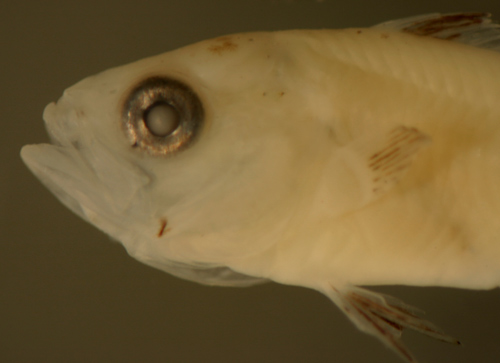
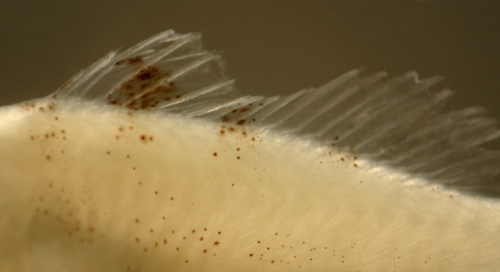

|
Alphestes
afer Mutton hamlet
Anthias asperilinguis
Anthias nicholsi
Anthias tenuis
Anthias woodsi
Baldwinella aureorubens (ex-Hemanthias
& Pronotogrammus)
Baldwinella vivanus
Bathyanthias atlanticus (French Guiana, plus
S. Carib?)
Bathyanthias cubensis (valid?)
Bathyanthias mexicanus (Gulf of Mexico only?)
ex-Pikea
Bullsichthys caribbaeus
Centropristis fuscula (Cuba north)
Centropristis philadelphica (Gulf of Mexico north)
Centropristis ocyura (Gulf of Mexico, Florida Keys
north)
Centropristis striata (Gulf of Mexico north)
Cephalopholis
cruentata Graysby (= Petrometopon cruentatus)
Cephalopholis
fulva Coney (= Epinephelus fulvus)
Dermatolepis
inermis Marbled grouper (= Epinephelus inermis)
Diplectrum
bivittatum
Diplectrum formosum (Florida and Gulf of Mexico,
Colombia south)
Diplectrum radiale (S Caribbean to Brazil)
Epinephelus adscensionis Rock hind
Epinephelus drummondhayi (Texas to Bermuda)
Epinephelus flavolimbatus Yellowedge grouper
Epinephelus guttatus Red hind
Epinephelus itajara Jewfish or Goliath grouper
Epinephelus morio Red grouper
Epinephelus mystacinus Misty grouper
Epinephelus nigritus Warsaw grouper
Epinephelus niveatus Snowy grouper
Epinephelus striatus Nassau grouper
Gonioplectrus hispanus Spanish flag
Hemanthias leptus (Gulf of Mexico)
Hemanthias vivanus
Hypoplectrus
aberrans Yellowbelly Hamlet
Hypoplectrus
atlahua Jarocho Hamlet (new sp. Tavera &
Acero 2013)
Hypoplectrus
castroaguirrei Veracruz Hamlet (new sp. Del
Moral-Flores et al. 2011)
Hypoplectrus
chlorurus Yellowtail Hamlet
Hypoplectrus
ecosur Contoy Barred Hamlet (Contoy, Yucatan
only; new sp. 2012)
Hypoplectrus
floridae Florida Barred Hamlet (S Florida; new
sp. 2012)
Hypoplectrus
gemma Blue Hamlet (S. Florida and Alacranes
Reef)
Hypoplectrus
gummigutta Golden Hamlet
Hypoplectrus guttavarius Shy Hamlet
Hypoplectrus
indigo Indigo Hamlet
Hypoplectrus
maculiferus
Hypoplectrus
maya Maya Hamlet (MAB lagoon; new sp. 2011)
Hypoplectrus
nigricans Black Hamlet
Hypoplectrus
providencianus Masked Hamlet (San Andres, Providencia,
W Caribbean)
Hypoplectrus
puella Barred Hamlet
Hypoplectrus
randallorum Tan Hamlet, new sp. 2011
Hypoplectrus
unicolor Butter Hamlet
Jeboehlkia gladifer
Liopropoma aberrans (Cuba and Bahamas)
Liopropoma carmabi
Liopropoma eukrines (Gulf of Mexico)
Liopropoma mowbrayi Cave bass
Liopropoma olneyi Yellow-spotted Golden Bass,
new sp. 2014
Liopropoma rubre
Liopropoma santi Spot-tail Golden Bass, new sp.
2014
Mycteroperca acutirostrus Comb grouper
Mycteroperca bonaci Black grouper
Mycteroperca cidi (Venezuela)
Mycteroperca interstitialis Yellowmouth grouper
Mycteroperca microlepis Gag (US to Yucatan, Brazil)
Mycteroperca phenax Scamp (US, Gulf of Mexico)
Mycteroperca tigris Tiger grouper
Mycteroperca venenosa Yellowfin grouper
Paralabrax dewegeri (Venezuela to Brazil)
Paranthias furcifer
Parasphyraenops atrimanus
Parasphyraenops incisus
Plectranthias garrupellus
Pronotogrammus martinicensis
Pseudogramma
gregoryi Reef bass
Rypticus bistrispinus
Rypticus bornoi (includes Rypticus macrostigmus)
Rypticus maculatus (US and Gulf of Mexico)
Rypticus randalli (= Rypticus brachyrhinus)
Rypticus saponaceus
Soapfish
Rypticus subbifrenatus
Schultzea beta
Serraniculus pumilio
Serranus
annularis Orangeback bass
Serranus atrobranchus
Serranus
baldwini Lantern bass
Serranus chionaraia
Serranus flaviventris Twinspot bass
Serranus luciopercanus
Serranus maytagi
Serranus notospilus
Serranus phoebe Tattler
Serranus subligarius Belted sandbass (US and Gulf
of Mexico)
Serranus
tabacarius Tobaccofish
Serranus
tigrinus Harlequin bass
Serranus
tortugarum Chalk bass
|
|
|
FAMILY GRAMMATIDAE
|
Gramma dejongi Dejong's
basslet (new species 2010, S. Cuba only)
Gramma linki Yellowlined basslet
Gramma loreto Royal gramma
Gramma melacara Blackcap basslet
Lipogramma anabantoides
Lipogramma evides Banded basslet
Lipogramma flavescens Yellow basslet
Lipogramma klayi Bicolor basslet
Lipogramma trilineata Threeline basslet
Lipogramma regia Royal basslet
Lipogramma robinsi Yellowbar basslet
Lipogramma rosea Rosy basslet
|
|
|
|
Centropomus ensiferus
Swordspine snook
Centropomus mexicanus
Centropomus parallelus Fat snook
Centropomus pectinatus Tarpon snook
Centropomus poeyi Mexican snook (Mexico to Belize)
Centropomus undecimalis Common snook |
|
|
FAMILY PRIACANTHIDAE
|
| Cookeolus japonicus
(deep-water)
Heteropriacanthus cruentatus Glasseye (= Priacanthus
cruentatus)
Priacanthus arenatus Atlantic bigeye
Pristigenys alta Short bigeye (= Pseudopriacanthus
altus)
|
|
|
FAMILY APOGONIDAE
|
Apogon affinis
Bigtooth cardinalfish (deeper water)
Apogon aurolineatus
Apogon binotatus Barred cardinalfish
Apogon evermanni Oddscale cardinalfish
Apogon lachneri Whitestar cardinalfish
Apogon leptocaulus Slendertail cardinalfish (deeper
water)
Apogon maculatus Flamefish
Apogon mosavi Dwarf cardinalfish (Bahamas, Haiti,
Jamaica +?)
Apogon phenax
Apogon pillionatus
Apogon planifrons Pale cardinalfish
Apogon pseudomaculatus Twospot cardinalfish
Apogon quadrisquamatus Sawcheek cardinalfish
Apogon robbyi Striped cardinalfish
Apogon robinsi Roughlip cardinalfish (Bahamas and
Greater Antilles)
Apogon townsendi Belted cardinalfish
Astrapogon alutus Bronze cardinalfish
Astrapogon puncticulatus Blackfin cardinalfish
Astrapogon stellatus Conchfish
Phaeoptyx conklini Freckled cardinalfish
Phaeoptyx pigmentaria Dusky cardinalfish
Phaeoptyx xenus Sponge cardinalfish
|
|
|
FAMILY MALACANTHIDAE
|
| Malacanthus plumieri
Sand tilefish |
|
|
FAMILY CIRRHITIDAE
|
| Amblycirrhitus pinos
Red-spotted Hawkfish |
|
|
FAMILY MUGILIDAE
|
| Agonostomus monticola
Mountain mullet (freshwater adult)
Joturus pichardi Hognose mullet (freshwater adult)
Mugil cephalus Striped mullet (worldwide, but
not Caribbean?)
Mugil curema White mullet
Mugil curvidens Dwarf mullet
Mugil gaimardianus
Mugil gyrans
Mugil hospes Hospe mullet (Belize and south)
Mugil incilis
Mugil liza Liza
Mugil trichodon
|
|
|
|
Sphyraena barracuda
Great barracuda
Sphyraena guachancho
Sphyraena picudilla Southern sennet
|
|
|
|
Polydactylus octonemus
Atlantic threadfin (US and Gulf of Mexico, and south?)
Polydactylus oligodon Smallscale threadfin
Polydactylus virginicus Barbu
|
|
|
|
| Rachycentron canadum
Cobia
|
|
|
|
Echeneis naucrates
(often on reefs)
Echeneis neucratoides (W Atlantic)
Phtheirichthys lineatus Slender sharksucker
Remora australis Whalesucker (on cetaceans)
Remora brachyptera Spearfish remora (on billfishes)
Remora osteochir Marlinsucker (on billfishes)
Remora remora
Remorina albescens (on manta rays)
|
|
|
|
Alectis ciliaris
African pompano
Carangoides bartholomaei Yellow jack
Carangoides crysos Blue runner
Carangoides ruber Bar jack
Caranx hippos Crevalle jack
Caranx latus Horse-eye jack
Caranx lugubris Black jack
Chloroscombrus chrysurus Atlantic bumper
Decapterus macarellus Mackerel scad
Decapterus punctatus Round scad
Decapterus tabl Roughear scad
Elagatis bipinnulatus Rainbow runner
Hemicaranx amblyrhynchus Bluntnose jack
Naucrates ductor Pilotfish
Oligoplites palometa (S Caribbean)
Oligoplites saliens Sauteur (S Caribbean)
Oligoplites saurus Leatherjacket
Pseudocaranx dentex White trevally
Selar crumenophthalmus Bigeye scad
Selene brownii Caribbean moonfish
Selene setapinnis Atlantic moonfish
Selene vomer Lookdown
Seriola dumerili Greater amberjack
Seriola fasciata Lesser amberjack
Seriola lalandi Yellowtail amberjack
Seriola rivoliana Almaco jack
Seriola zonata Banded rudderfish
Trachinotus carolinus Florida pompano
Trachinotus cayennensis Guiana pompano (S Caribbean)
Trachinotus falcatus Permit
Trachinotus goodei Palometa
Trachurus lathami Rough scad
Uraspis secunda Cottonmouth jack
|
|
|
|
Acanthocybium solandri
Wahoo
Auxis rochei Bullet mackerel
Auxis thazard Frigate mackerel
Euthynnus alletteratus Little tunny
Katsuwonus pelamis Skipjack tuna
Sarda sarda Atlantic bonito (temperate/sub-tropical)
Scomber colias Atlantic chub mackerel (part? of
Scomber japonicus)
Scomberomorus brasiliensis Serra Spanish mackerel
(Belize south)
Scomberomorus cavalla King mackerel
Scomberomorus maculatus Spanish mackerel (Gulf
of Mexico)
Scomberomorus regalis Cero
Thunnus alalunga Albacore tuna (temperate/sub-tropical)
Thunnus albacares Yellowfin tuna
Thunnus atlanticus Blackfin tuna
Thunnus obesus Bigeye tuna
Thunnus thynnus Northern bluefin tuna (temperate/sub-tropical)
|
|
|
FAMILY LUTJANIDAE
|


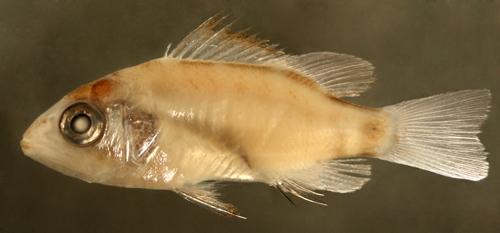
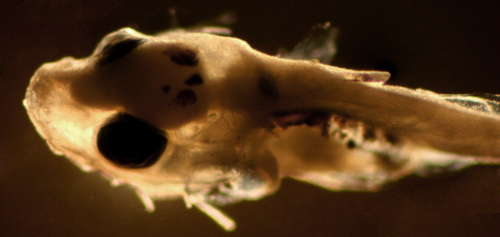
|
| Apsilus
dentatus Black snapper
Etelis oculatus Queen snapper
Lutjanus
analis Mutton snapper
Lutjanus
apodus Schoolmaster snapper
Lutjanus
buccanella Blackfin snapper
Lutjanus campechanus Red snapper
Lutjanus
cyanopterus Cubera snapper
Lutjanus
griseus Gray snapper
Lutjanus
jocu Dog snapper
Lutjanus
mahogoni Mahogany snapper (sometimes L. mahogani)
Lutjanus purpureus Southern Red snapper (prob.=
L. campechanus)
Lutjanus
synagris Lane snapper
Lutjanus
vivanus Silk snapper
Ocyurus
chrysurus Yellowtail snapper
Pristipomoides aquilonaris Wenchman
Pristipomoides freemani Slender Wenchman (Florida/S
Caribbean)
Pristipomoides macrophthalmus Cardinal snapper
Rhomboplites aurorubens Vermilion snapper
|
|
|
|
Anisotremus moricandi
(Panama south)
Anisotremus surinamensis Black margate
Anisotremus virginicus Porkfish
Conodon nobilis Barred grunt
Genyatremus luteus (Colombia south)
Haemulon album White margate
Haemulon aurolineatum Tomtate
Haemulon bonariense Black grunt
Haemulon boschmae (Colombia to Venezuela)
Haemulon carbonarium Caesar grunt
Haemulon chrysargyreum Smallmouth grunt
Haemulon flavolineatum French grunt
Haemulon macrostomum Spanish grunt
Haemulon melanurum Cottonwick
Haemulon parra Sailor's choice
Haemulon plumieri White Grunt
Haemulon sciurus Bluestriped grunt
Haemulon steindachneri (Panama east, Pacific species)
Haemulon striatum Striped grunt
Orthopristis chrysoptera Pigfish (US to Mexico)
Orthopristis ruber (Honduras south)
Pomadasys corvinaeformis Roughneck grunt
Pomadasys crocro Burro grunt
|
|
|
FAMILY INERMIIDAE
|
| Emmelichthyops atlanticus
Bogita
Inermia vittata Boga
|
|
|
FAMILY SPARIDAE
|
Archosargus probatocephalus
Sheepshead seabream
Archosargus rhomboidalis Seabream
Calamus arctifrons (Gulf of Mexico)
Calamus bajonado Jolthead porgy
Calamus calamus Saucereye porgy
Calamus campechanus (Campeche only)
Calamus cervigoni (NE Venezuela)
Calamus leucosteus (Gulf of Mexico north)
Calamus nodosus (Gulf of Mexico north)
Calamus penna Sheepshead porgy
Calamus pennatula Pluma porgy
Calamus proridens (Gulf of Mexico north)
Diplodus argenteus Silver porgy
Diplodus holbrookii (Gulf of Mexico north)
Lagodon rhomboides Pinfish
Pagrus sedecim Red Porgy (= Pagrus pagrus)
Stenotomus caprinus Longspine porgy (Gulf of Mexico
north)
|
|
|
FAMILY SCIAENIDAE
|
Bairdiella batabana
(= Corvula batabana)
Bairdiella chrysoura (Florida and Gulf of Mexico)
Bairdiella ronchus Ground croaker
Bairdiella sanctaeluciae Striped croaker (= Corvula
sanctaeluciae)
Ctenosciaena gracilicirrhus (Nicaragua to Brazil)
Cynoscion acoupa (Panama to Argentina)
Cynoscion arenarius (Florida and Gulf of Mexico)
Cynoscion jamaicensis
Cynoscion leiarchus (Nicaragua to Brazil)
Cynoscion microlepidotus (Venezuela to Brazil)
Cynoscion nebulosus Spotted weakfish (Florida and
Gulf of Mexico)
Cynoscion nothus Silver seatrout (Florida and Gulf
of Mexico)
Cynoscion similis (S Caribbean)
Cynoscion virescens (Nicaragua to Brazil)
Equetus iwamotoi Blackbar drum (deep, = Pareques
iwamotoi)
Equetus lanceolatus Jack-knife fish
Equetus punctatus Spotted drum
Isopisthus parvipinnis (Costa Rica to Brazil)
Larimus breviceps Shorthead drum
Larimus fasciatus (Florida and Gulf of Mexico)
Leiostomus xanthurus Spot (Florida and Gulf of
Mexico)
Lonchurus elegans (S Caribbean)
Lonchurus lanceolatus (S Caribbean)
Macrodon ancylodon King weakfish (SE Caribbean)
Menticirrhus americanus Southern kingfish
Menticirrhus littoralis
Menticirrhus saxatilis (Florida and Gulf of Mexico)
Micropogonias furnieri
Micropogonias undulatus Atlantic croaker (Florida
and Gulf of Mexico)
Nebris microps (Colombia to Brazil)
Odontoscion dentex Reef croaker
Ophioscion costaricensis (= Stellifer microps?,
Costa Rica and Suriname)
Ophioscion panamensis (valid?, Belize to Panama)
Ophioscion punctatissimus (Panama to Brazil, and
Puerto Rico)
Paralonchurus brasiliensis (Panama to Brazil)
Pareques acuminatus High-hat (= Equetus acuminatus)
Pareques umbrosus Cubbyu
Pogonias cromis Black drum
Sciaena bathytatus (S Caribbean, deep-water)
Sciaena trewavasae (=Protosciaena trewavasae,
deep-water)
Sciaenops ocellatus Red Drum (Florida and Gulf
of Mexico)
Stellifer chaoi (Colombia and Venezuela)
Stellifer colonensis Stardrum
Stellifer griseus (S Caribbean)
Stellifer lanceolatus (Florida and Gulf of Mexico)
Stellifer magoi (Venezuela)
Stellifer microps (Nicaragua to Brazil)
Stellifer naso (Venezuela to Brazil)
Stellifer rastrifer (Colombia to Brazil)
Stellifer stellifer (Venezuela to Brazil)
Stellifer venezuelae (Colombia and Venezuela)
Umbrina broussonnetii Striped Drum
Umbrina coroides Sand drum
Umbrina milliae (Colombia, deep water)
|
|
|
FAMILY MULLIDAE
|
| Mulloidichthys martinicus
Yellow goatfish
Mullus auratus Red goatfish
Pseudupeneus maculatus Spotted goatfish
Upeneus parvus Dwarf goatfish
|
|
|
|
Pempheris poeyi
Shortfin sweeper
Pempheris schomburgkii Copper or glassy sweeper (=
P. schomburgki) |
|
|
|
| Lobotes surinamensis
Tripletail |
|
|
|
Diapterus auratus
Irish pompano
Diapterus rhombeus Silver mojarra
Eucinostomus argenteus Spotfin mojarra
Eucinostomus gula Silver jenny
Eucinostomus harengulus Tidewater mojarra
Eucinostomus havana Bigeye mojarra
Eucinostomus jonesii Slender mojarra (= Eucinostomus
jonesi)
Eucinostomus lefroyi Mottled mojarra (= Ulaema
lefroyi)
Eucinostomus melanopterus Flagfin mojarra
Eugerres brasilianus (Belize, Cuba south to Brazil?)
Eugerres mexicanus (Mexico Guatemala FW, Rio Usumacinta)
Eugerres plumieri Striped mojarra (Florida, Gulf
of Mexico to Cuba, Panama?)
Gerres cinereus Yellowfin mojarra
|
|
|
|
Kyphosus incisor
Yellow sea chub
Kyphosus sectatrix Bermuda sea chub |
|
|
FAMILY EPHIPPIDAE
|
| Chaetodipterus faber
Atlantic spadefish |
|
|
FAMILY BOTHIDAE
|
Bothus lunatus
Bothus ocellatus Eyed flounder
Bothus robinsi
Chascanopsetta lugubris
Engyophrys senta
Monolene sessilicauda
Trichopsetta ventralis
|
|
|
FAMILY PARALICHTHYIDAE
|
Ancylopsetta antillarum
Ancylopsetta cycloidea (S Caribbean)
Ancylopsetta dilecta Three-eye flounder
Ancylopsetta kumperae (Colombia to Brazil)
Ancylopsetta microctenus (Honduras and Nicaragua)
Ancylopsetta quadrocellata (Gulf of Mexico, Florida
north)
Citharichthys abbotti (S Gulf of Mexico to Honduras)
Citharichthys amblyregmatus (Nicaragua)
Citharichthys arctifrons (Gulf of Mexico, Florida
north)
Citharichthys arenaceus
Citharichthys cornutus Horned whiff
Citharichthys dinocerus
Citharichthys gymnorhinus
Citharichthys macrops Spotted whiff
Citharichthys minutus (Venezuela)
Citharichthys spilopterus Bay whiff
Citharichthys uhleri
Citharichthys valdezi (S Caribbean)
Cyclopsetta chittendeni Mexican flounder
Cyclopsetta fimbriata
Etropus crossotus Fringed flounder
Etropus cyclosquamus (Gulf of Mexico, Florida north)
Etropus delsmani (Venezuela)
Etropus microstomus (Gulf of Mexico, Florida north)
Etropus rimosus (Gulf of Mexico, Florida north)
Gastropsetta frontalis Shrimp flounder
Paralichthys albigutta Gulf flounder
Paralichthys lethostigma (Gulf of Mexico, Florida
north)
Paralichthys squamilentus (Gulf of Mexico, Florida
north)
Paralichthys tropicus (S Caribbean)
Syacium gunteri
Syacium micrurum Channel flounder
Syacium papillosum Dusky flounder
|
|
|
FAMILY ACHIRIDAE
|
Achirus declivis
Plainfin sole
Achirus lineatus Lined sole
Gymnachirus melas Naked sole (Bahamas and Gulf
of Mexico)
Gymnachirus nudus
Gymnachirus texae (Gulf of Mexico)
Trinectes inscriptus Scrawled sole
Trinectes maculatus Hogchoker
Trinectes paulistanus Southern hogchoker
|
|
|
FAMILY CYNOGLOSSIDAE
|
|
Symphurus arawak Caribbean tonguefish
Symphurus civitatium Offshore tonguefish (Gulf
of Mexico)
Symphurus diomedeanus Spottedfin tonguefish
Symphurus ommaspilus Ocellated tonguefish
Symphurus piger Deepwater tonguefish
Symphurus plagiusa Blackcheek tonguefish
Symphurus rhytisma Patchtail tonguefish
Symphurus tessellatus
|
|
|
|
Chaetodon capistratus Foureye butterflyfish
Chaetodon
ocellatus Spotfin butterflyfish
Chaetodon
sedentarius Reef butterflyfish
Chaetodon
striatus Banded butterflyfish
Prognathodes aculeatus Longsnout butterflyfish
Prognathodes aya (deep-water, Gulf of Mexico, Florida
north, also Jamaica)
Prognathodes guyanensis (deep-water, Caribbean
basin)
|
|
|
|
Centropyge argi
Cherubfish
Centropyge aurantonotus (SE Caribbean)
Holacanthus bermudensis Angelfish (= Holacanthus
isabelita)
Holacanthus ciliaris Queen angelfish
Holacanthus tricolor Rock beauty
Pomacanthus arcuatus Gray angelfish
Pomacanthus paru French angelfish
|
|
|
FAMILY POMACENTRIDAE
|
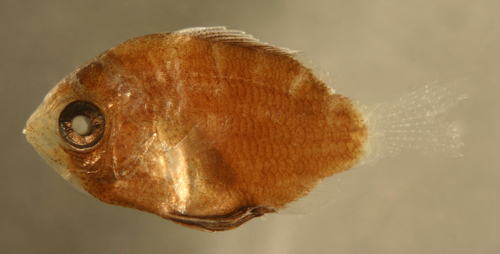 |
Abudefduf
saxatilis Sergeant major
Abudefduf
taurus Night sergeant
Chromis
cyanea Blue chromis
Chromis enchrysura Yellowtail reeffish
Chromis flavicauda Cobalt chromis (Bermuda and
Brazil, valid?)
Chromis
insolata Sunshinefish
Chromis
multilineata Brown chromis
Chromis
scotti Purple reeffish
Microspathodon
chrysurus Yellowtail damselfish
Stegastes
adustus Dusky damselfish
Stegastes
diencaeus Longfin damselfish
Stegastes
leucostictus Beaugregory
Stegastes otophorus (freshwater)
Stegastes
partitus Bicolor damselfish
Stegastes
planifrons Threespot damselfish
Stegastes
variabilis Cocoa damselfish
|
|
|
FAMILY LABRIDAE
|
 |
Bodianus pulchellus
Spotfin hogfish
Bodianus
rufus Spanish hogfish
Clepticus
parrae
Decodon
puellaris
Doratonotus
megalepis Dwarf wrasse
Halichoeres bathyphilus
Halichoeres
bivittatus Slippery dick
Halichoeres burekae (deep-water, Gulf of Mexico)
Halichoeres caudalis Painted wrasse
Halichoeres cyanocephalus Yellowcheek wrasse
Halichoeres
garnoti Yellowhead wrasse
Halichoeres
maculipinna Clown wrasse
Halichoeres
pictus Rainbow wrasse
Halichoeres
poeyi Blackear wrasse
Halichoeres socialis (Belize, midshelf reef)
Halichoeres
radiatus Puddingwife wrasse
Lachnolaimus
maximus Hogfish
Thalassoma
bifasciatum Bluehead wrasse
Xyrichtys
martinicensis Rosy razorfish
Xyrichtys
novacula Pearly razorfish
Xyrichtys
splendens Green razorfish
|
|
|
|
| Cryptotomus
roseus Bluelip parrotfish
Nicholsina
usta Emerald parrotfish
Scarus coelestinus Midnight parrotfish
Scarus coeruleus Blue parrotfish
Scarus guacamaia Rainbow parrotfish
Scarus
iseri Striped parrotfish (often S. iserti)
Scarus
taeniopterus Princess parrotfish
Scarus
vetula Queen parrotfish
Sparisoma
atomarium Greenblotch parrotfish
Sparisoma
aurofrenatum Redband parrotfish
Sparisoma
chrysopterum Redtail parrotfish
Sparisoma griseorubrum (NE Venezuela, also S.
griseorubra)
Sparisoma
radians Bucktooth parrotfish
Sparisoma
rubripinne Redfin parrotfish
Sparisoma
viride Stoplight parrotfish
|
|
|
|
| (excluding several deep-water
species)
Opistognathus aurifrons Yellowhead jawfish
Opistognathus
whitehursti
Opistognathus signatus
Opistognathus macrognathus
Opistognathus robinsi (Florida to Bahamas)
Opistognathus maxillosus
Opistognathus lonchurus
Opistognathus gilberti
Lonchopisthus micrognathus
|
|
|
FAMILY BLENNIIDAE
|
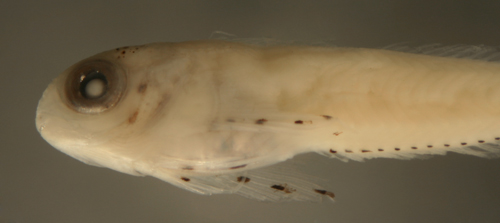 |
| |
Chasmodes bosquianus
(NE Florida and north)
Chasmodes longimaxilla (N. Gulf of Mexico)
Chasmodes saburrae (N. Gulf of Mexico)
Entomacrodus
nigricans Pearl blenny
Hypleurochilus bermudensis (Bermuda, Bahamas to
Florida)
Hypleurochilus caudovittatus (Florida)
Hypleurochilus geminatus (Florida north)
Hypleurochilus multifilis (N. Gulf of Mexico)
Hypleurochilus pseudoaequipinnis Oyster blenny
(former part of H. aequipinnis)
Hypleurochilus
springeri Orangespotted blenny
Hypsoblennius brevipinnis (Pacific species, invading
Panama Canal)
Hypsoblennius exstochilus (Bahamas, Cayman, Bonaire)
Hypsoblennius hentz (often Hypsoblennius hentzi,
US to Yucatan)
Hypsoblennius
invemar
Hypsoblennius ionthas (N Gulf of Mexico, US east
coast)
Lupinoblennius nicholsi (N Gulf of Mexico)
Lupinoblennius vinctus Mangrove blenny (= Lupinoblennius
dispar)
Ophioblennius
atlanticus Atlantic redlip blenny (Southern and
Eastern Atlantic)
Ophioblennius
macclurei Caribbean redlip blenny (Caribbean Sea)
Parablennius
marmoreus Seaweed blenny
Scartella
cristata Molly miller
|
|
|
|
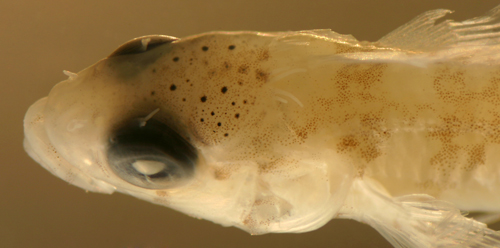
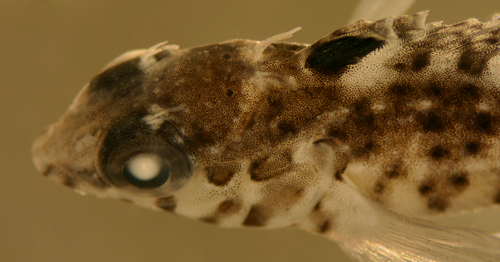
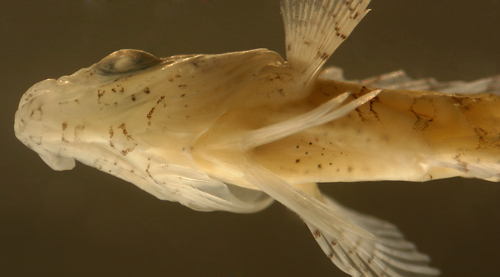
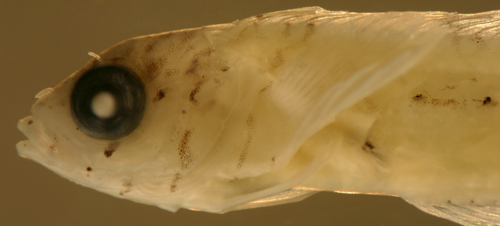
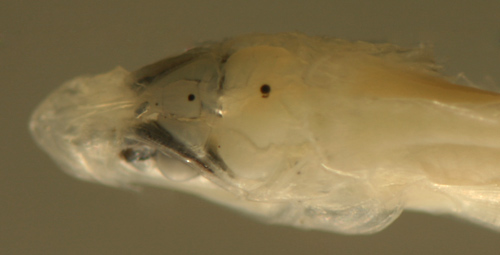
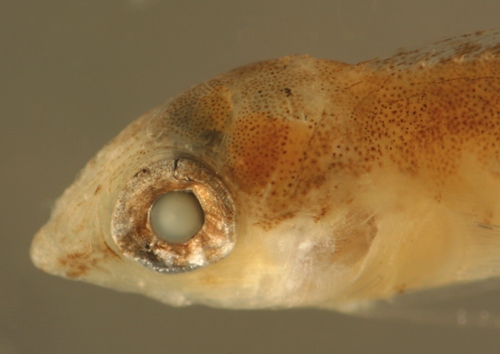
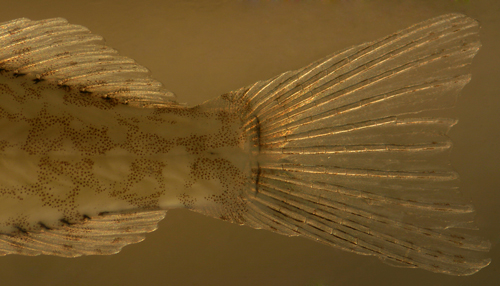 |
| Haptoclinus apectolophus
(Arrowsmith bank, Yucatan, 300m)
Labrisomus
albigenys Whitecheek blenny
Labrisomus
bucciferus Puffcheek blenny
Labrisomus
filamentosus Quillfin blenny
Labrisomus
conditus (Brazil, Panama, Florida; cryptic sp.
of L. nuchipinnis)
Labrisomus
cricota (Brazil, Panama, Yucatan; cryptic sp.
of L. nuchipinnis)
Labrisomus
gobio Palehead blenny
Labrisomus
guppyi Mimic blenny
Labrisomus
haitiensis Longfin blenny
Labrisomus
kalisherae Downy blenny
Labrisomus
nigricinctus Spotcheek blenny
Labrisomus
nuchipinnis Hairy blenny
Malacoctenus
aurolineatus Goldline blenny
Malacoctenus
boehlkei Diamond blenny
Malacoctenus
delalandii (= M. delalandei; W and S Caribbean)
Malacoctenus
erdmani Imitator blenny
Malacoctenus
gilli Dusky blenny
Malacoctenus
macropus Rosy blenny
Malacoctenus
triangulatus Saddled blenny
Malacoctenus
versicolor Barfin blenny
Nemaclinus atelestos Threadfin blenny (Gulf of
Mexico and Caribbean, deep)
Paraclinus barbatus Goatee blenny
Paraclinus
cingulatus Coral blenny
Paraclinus
fasciatus Banded blenny
Paraclinus grandicomis Horned blenny (Florida,
Bahamas, Antilles; not "grandicornis")
Paraclinus infrons Bald blenny (Florida, Bahamas,
Belize)
Paraclinus marmoratus Marbled blenny (Florida to
Belize, NE Venezuela)
Paraclinus naeorhegmis Surf blenny (Bahamas, Belize,
Providencia)
Paraclinus
nigripinnis Blackfin blenny
Starksia
atlantica Bahamas smootheye blenny (now part of
a species complex; Bahamas)
Starksia
culebrae Antillean checkered blenny (Antilles)
Starksia elongata Elongate blenny (widespread)
Starksia fasciata Blackbar blenny (Bahamas and
Greater Antilles)
Starksia
greenfieldi Tobago chessboard blenny (new
species 2011, Testigos to Tobago)
Starksia
guttata Southern checkered blenny (SE Caribbean)
Starksia hassi Ringed blenny (widespread Caribbean)
Starksia
langi Bay chessboard blenny (new
species 2011, Bay of Honduras and south)
Starksia
lepicoelia Bahamas blackcheek blenny (part of
a species complex; Bahamas)
Starksia leucovitta Whitesaddle blenny (new species
2003, Navassa)
Starksia melasma Blackspot blenny (new species
2003, PR and St.Croix)
Starksia
nanodes Dwarf blenny (species complex)
Starksia
ocellata Florida checkered blenny (now part of
a species complex; Florida)
Starksia
occidentalis Western checkered blenny (MAB to
Panama)
Starksia rava (new species 2003, Tobago)
Starksia
robertsoni Panama blackcheek blenny (new
species 2011, Panama)
Starksia sella (new species 2003, Tobago)
Starksia
sangreyae Bay smootheye blenny (new
species 2011, Belize)
Starksia
sluiteri Southern chessboard blenny (now part
of a complex; S. Neth. Antilles)
Starksia smithvanizi Brokenbar blenny (new species
2003, Antilles)
Starksia
springeri Southern smootheye blenny (new
species 2011, S. Neth. Antilles)
Starksia starcki Key blenny (Florida to Belize)
Starksia
variabilis Colombian checkered blenny (Colombia)
Starksia
weigti Bay blackcheek blenny (new
species 2011, Bay of Honduras)
Starksia
williamsi Antillean blackcheek blenny (new
species 2011, N. Antilles)
Starksia y-lineata Forkbar blenny (Cayman and Nicaraguan
Shelf)
|
|
|
|
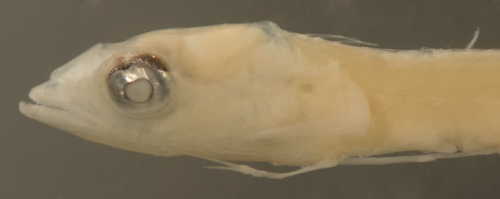 |
Acanthemblemaria aspera
Roughhead blenny (widespread, not SE Caribbean)
Acanthemblemaria betinensis Speckled blenny (Costa
Rica, Panama, and Colombia)
Acanthemblemaria chaplini Papillose blenny (FL, Bahamas,
Cuba, Yucatan)
Acanthemblemaria cubana (Cuba, Panama)
Acanthemblemaria greenfieldi False papillose blenny
(Belize & W Caribbean Islands)
Acanthemblemaria harpeza (Navassa)
Acanthemblemaria johnsoni (Tobago, NE Venezuela)
Acanthemblemaria maria Secretary blenny (widespread,
not Colombia, Neth Ant, or VZ)
Acanthemblemaria medusa (SE Caribbean)
Acanthemblemaria paula Dwarf spinyhead blenny (Belize
and Panama)
Acanthemblemaria rivasi Spotjaw blenny (Costa Rica,
Panama, Colombia, Venezuela)
Acanthemblemaria spinosa Spinyhead blenny (widespread,
not mainland S. Amer?)
Chaenopsis
limbaughi Yellowface pikeblenny (widespread, deeper
sand/coral)
Chaenopsis megalops (deep-water, Colombia)
Chaenopsis
ocellata Bluethroat pikeblenny (widespread, shallow
seagrass)
Chaenopsis resh (NE Venezuela)
Chaenopsis roseola (deep-water, NE Gulf of Mexico)
Chaenopsis stephensi (deep-water, Venezuela and
Yucatan, widespread?)
Coralliozetus cardonae Twinhorn blenny
Ekemblemaria nigra Moth blenny (Panama and Colombia)
Emblemaria atlantica Banner blenny (Bermuda, Florida,
Bahamas, & Gulf of Mexico)
Emblemaria biocellata Twospot blenny (deep, Colombia
to Suriname)
Emblemaria caldwelli Caribbean blenny (deep reef
walls, Bahamas, Belize, Jamaica)
Emblemaria caycedoi Colombian blenny (W. Caribbean)
Emblemaria culmenis Ridge blenny (deep, Venezuela)
Emblemaria diphyodontis Venezuelan blenny (Colombia
to NE Venezuela to Grenadines)
Emblemaria hyltoni Filament blenny (Utila and Roatan,
Honduras)
Emblemaria pandionis Sailfin blenny (widespread)
Emblemaria piratula Pirate blenny (NE Gulf of Mexico)
Emblemaria vitta (MesoAm BR, PR, DR, USVI, Bahamas,
Navassa) Flagfin Glass Blenny complex (7 spp. presently)
Emblemariopsis
arawak (Antilles, new
sp. 2010)
Emblemariopsis
carib Spikefin Glass Blenny (Antilles &
Bahamas, new
sp. 2010, not signifera)
Emblemariopsis dianae Orangeflag Glass Blenny (Belize
midshelf & Honduras)
Emblemariopsis leptocirris Black Banner Glass
Blenny (widespread, range uncertain)
Emblemariopsis occidentalis Flagfin Glass Blenny
(Bahamas only?)
Emblemariopsis ramirezi Red Banner Glass Blenny
(Venezuela & S. Lesser Antilles)
Emblemariopsis tayrona Tayrona Banner Glass Blenny
(Colombia, Testigos)
Smoothhead Glass Blenny complex- ("Blackhead
Blennies") (5 spp. presently)
Emblemariopsis bahamensis Bahamas Smoothhead
Glass Blenny (Bahamas to Antilles)
Emblemariopsis bottomei Southern Smoothhead Blenny
(="shorthead"; SE Caribbean)
Emblemariopsis diaphana Glass Blenny (Florida
Keys, Gulf of Mexico)
Emblemariopsis pricei Bay Smoothhead Glass Blenny
(="seafan"; Bay of Honduras only)
Emblemariopsis randalli Venezuelan Smoothhead
Glass Blenny (= "hornless"; VZ only)
Bluegold Blenny complex (1 spp. presently)
Emblemariopsis ruetzleri Bluegold Glass Blenny
(Mesoamerican Barrier Reef, Panama, & VI)
Hemiemblemaria simulus Wrasse blenny
Lucayablennius zingaro Arrow blenny
Protemblemaria punctata (NE Venezuela)
Stathmonotus
gymnodermis Naked blenny
Stathmonotus
hemphilli Blackbelly blenny
Stathmonotus
stahli Eelgrass blenny
Stathmonotus
tekla Eelgrass blenny
|
|
|
|
|
Enneanectes
altivelis Lofty triplefin
Enneanectes
atrorus Blackedge triplefin
Enneanectes
boehlkei Roughhead triplefin
Enneanectes
jordani Mimic triplefin
Enneanectes
pectoralis Redeye triplefin |
|
|
|
|
| Dactylagnus
peratikos (Costa Rica to Panama)
Dactyloscopus boehlkei (Antilles)
Dactyloscopus comptus (Antilles)
Dactyloscopus crossotus Bigeye stargazer
Dactyloscopus foraminosus (Florida? and Brazil)
Dactyloscopus moorei Speckled stargazer (Florida
to Texas)
Dactyloscopus poeyi Shortchin stargazer
Dactyloscopus tridigitatus Sand stargazer
Gillellus healae (deep-water)
Gillellus greyae Arrow stargazer
Gillellus inescatus (Navassa Island)
Gillellus jacksoni (Belize and Antilles)
Gillellus uranidea Warteye stargazer
Leurochilus acon Smoothlip stargazer (Antilles)
Myxodagnus belone Dartfish (Antilles)
Platygillellus rubrocinctus Saddle stargazer
Platygillellus smithi (Bahamas only)
|
|
|
FAMILY GOBIIDAE
|
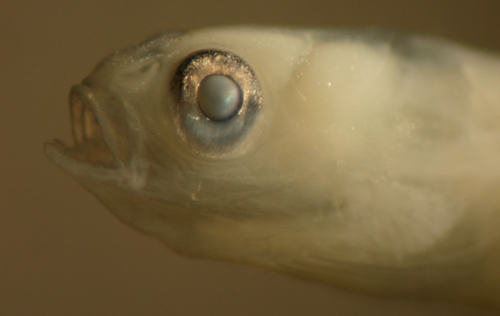
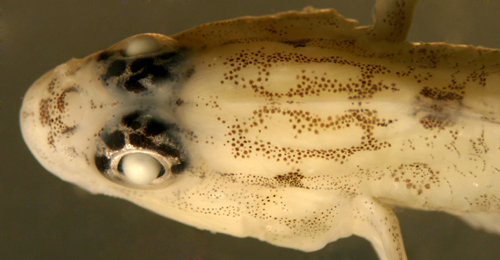
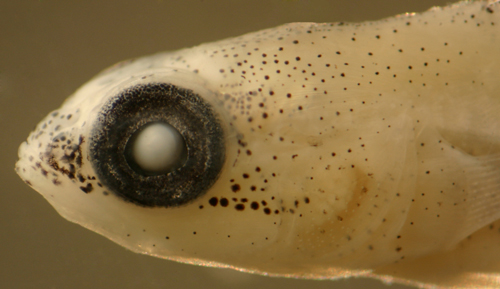 |
| Akko
dionaea (Colombia and Brazil)
Awaous
banana (A. tajasica is the Brazilian sibling
sp.)
Awaous flavus (Colombia eastward to Brazil)
Barbulifer antennatus
Barbulifer
ceuthoecus
Bathygobius
antilliensis (new species 2010, widespread, cryptic
sp. of B. soporator)
Bathygobius
curacao
Bathygobius
geminatus (new species 2010, Florida to PR, Brazil,
cryptic sp. B. soporator)
Bathygobius
lacertus (new species 2010, widespread, cryptic
sp. of B. soporator)
Bathygobius
mystacium
Bathygobius
soporator Frillfin goby, redescribed 2010 (Florida
to Brazil)
Bollmannia
boqueronensis
Bollmannia communis (Gulf of Mexico, plus)
Bollmannia eigenmanni (Gulf of Mexico, only?)
Bollmannia litura
Chriolepis benthonis (Gulf of Mexico)
Chriolepis
fisheri
Chriolepis vespa (Gulf of Mexico)
|
| |
|
Coryphopterus
alloides Barfin goby
Coryphopterus
bol Sand-canyon goby (new
species 2008, widespread deeper offshore sibling of
bridled goby)
Coryphopterus
dicrus Colon goby
Coryphopterus
eidolon Pallid goby (Wall sand-goby)
Coryphopterus
glaucofraenum Bridled goby (widespread inshore
species)
Coryphopterus
hyalinus Glass goby
Coryphopterus
kuna Kuna goby (new
species 2007, Florida, Bonaire, Belize, San Andres,
Panama, and Guadeloupe)
Coryphopterus
lipernes Peppermint goby
Coryphopterus
personatus Masked goby
Coryphopterus
punctipectophorus Spotted goby (US Atlantic coast,
Gulf of Mexico)
Coryphopterus
thrix Bartail goby (Speckled-eye goby)(widespread,
Florida to Brazil)
Coryphopterus
tortugae Patch-reef goby (redescribed
2008, widespread shallow offshore sibling of bridled
goby)
Coryphopterus
venezuelae Venezuelan bridled goby (NE Venezuela;
differs from C. bol by an additional dorsal and
anal-fin ray)
Ctenogobius
boleosoma (reef-associated; widespread)
Ctenogobius claytoni (freshwater/estuarine; Western
GOM; often C. claytonii)
Ctenogobius
fasciatus (freshwater/estuarine; widespread)
Ctenogobius phenacus (Venezuela south)
Ctenogobius pseudofasciatus Slashcheek goby (freshwater/estuarine;
widespread)
Ctenogobius
saepepallens (reef-associated; widespread)
Ctenogobius shufeldti (freshwater/estuarine; US
waters)
Ctenogobius smaragdus (weedy shallows; Florida,
Belize, and Greater Antilles plus Venezuela/Brazil)
Ctenogobius stigmaticus (silty marine; widespread)
Ctenogobius stigmaturus (freshwater/marine shallows;
Bermuda, Florida, Cuba, Belize to Panama)
Ctenogobius thoropsis (Surinam, Brazil)
Elacatinus cleaner-type
gobies (Gobiosoma)
Elacatinus atronasus Exuma goby (Exuma Sound endemic:
hovering species over coral)
Elacatinus chancei Shortstripe goby (SE Bahamas,
PR & Lesser Antilles, NE Venezuela: sponge)
Elacatinus
evelynae complex, sharknose cleaner goby (coral):
yellow-blue sharknose
cleaner (SE Bahamas, PR & Lesser Antilles, to SE Caribbean)
yellow sharknose cleaner
(NW Bahamas to Cuba)
white sharknose cleaner
(Hispaniola, Jamaica to W Caribbean offshore islands)
Elacatinus genie (Bahamas, Cuba, Cayman: coral)
Elacatinus horsti Yellowline goby (NW Bahamas,
Cuba, Hispaniola, S and W Caribbean islands: sponge)
Elacatinus
illecebrosus Barsnout cleaner goby (Yucatan (white),
Panama (yellow), Colombia (blue): coral)
Elacatinus jarocho Jarocho goby (S Gulf of Mexico
only: hovering species over coral)
Elacatinus
lori Linesnout goby (Mesoamerican Barrier Reef
only: sponge)
Elacatinus louisae Spotlight goby (Bahamas, Cuba,
W Caribbean: deep sponge)
Elacatinus
oceanops Neon cleaner goby (Florida and GOM to
Yucatan: coral)
Elacatinus
lobeli MAB neon cleaner goby (Mesoamerican Barrier
Reef: coral)
Elacatinus prochilos Broadstripe cleaner goby (Belize,
Jamaica, Greater & Lesser Antilles: deeper coral)
Elacatinus randalli Yellownose cleaner goby (SE
Caribbean: coral)(similar E.
phthirophagus in Noronha, Brazil)
Elacatinus tenox Slaty goby (widespread: deep sponge)
Elacatinus xanthiprora Yellowprow goby (Florida
Keys, GOM: sponge)
Elacatinus colini MAB Yellowprow goby (Mesoamerican
Barrier Reef: sponge)
Elacatinus serranilla Whiteprow goby (Serranilla
bank: sponge)
Elacatinus non-cleaner
gobies (Tigrigobius)
Elacatinus
dilepis Orangeside goby (widespread)
Elacatinus
gemmatus Frecklefin goby (widespread)
Elacatinus macrodon Tiger goby (S Florida, Bermuda,
Haiti (and Venezuela?)
Elacatinus
multifasciatus Greenbanded goby (Bahamas to Antilles
and SE Caribbean)
Elacatinus
pallens Wall goby (widespread)
Elacatinus
panamensis Panamanian Greenbanded goby (new
species 2010, Panama)
Elacatinus redimiculus Cinta goby (SW Gulf of Mexico
only)
Elacatinus rubrigenis Redcheek goby (new
species 2010, Utila, Honduras endemic)
Elacatinus
saucrus Leopard goby (widespread)
Elacatinus zebrellus (NE Venezuela, Trinidad, and
Panama)
|
| |
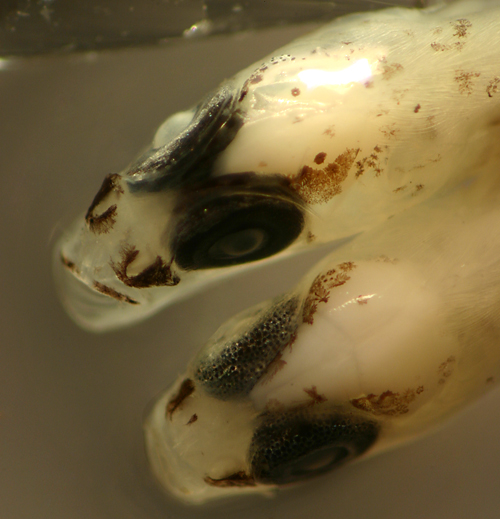
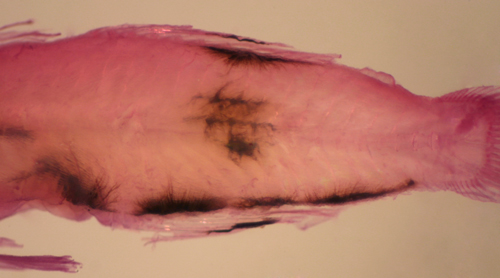
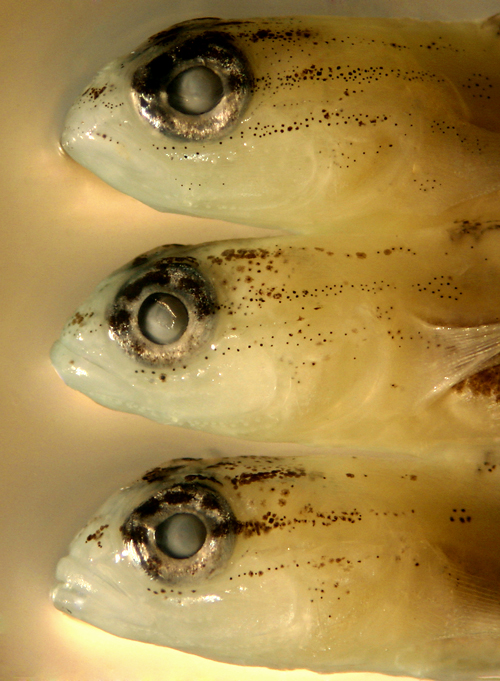
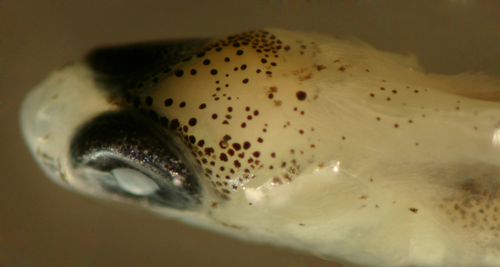

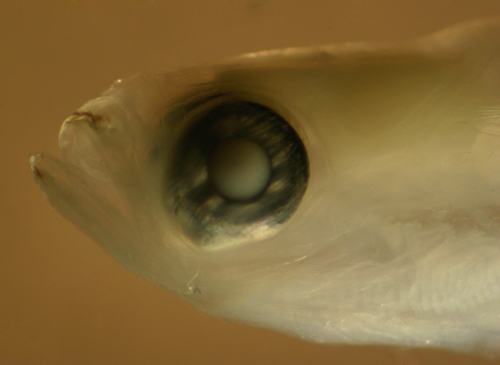
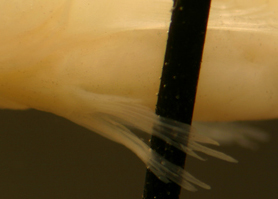
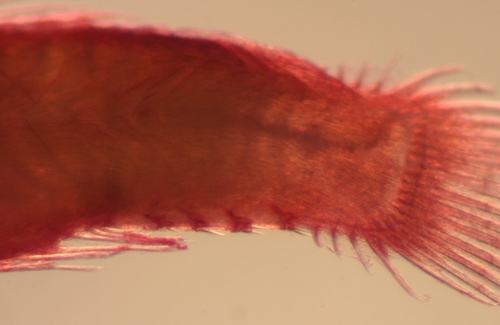
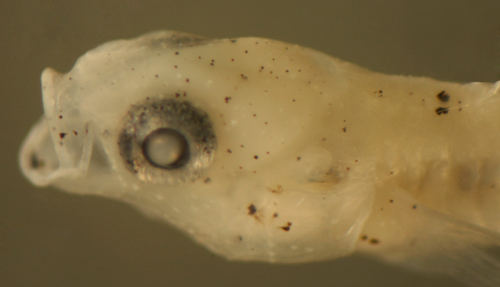
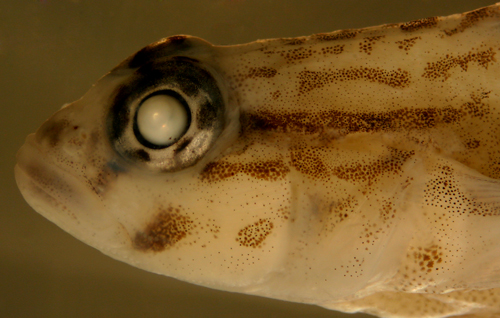 |
|
Evermannichthys bicolor (Jamaica, Haiti &
Navassa)
Evermannichthys convictor (Green Cay, Bahamas)
Evermannichthys
metzelaari (widespread Bahamas & Caribbean)
Evermannichthys silus (Samana Cay, Bahamas)
Evermannichthys spongicola (Florida and GOM)
Evorthodus
lyricus
Ginsburgellus
novemlineatus
Gnatholepis
cauerensis (Atlantic and Indian Oceans), was G.
thompsoni
Gobioides broussoneti
Gobioides grahamae (Guyana to Brazil)
Gobionellus
oceanicus
Gobiosoma bosc (US east coast and Gulf of Mexico)
Gobiosoma ginsburgi (US east coast)
Gobiosoma grosvenori (Florida, Bahamas, Jamaica,
NE Venezuela)
Gobiosoma hemigymnum (West Indies)
Gobiosoma
hildebrandi (Panama Canal and environs)
Gobiosoma longipala (N Gulf of Mexico)
Gobiosoma robustum (Gulf of Mexico)
Gobiosoma schultzi (Lake Maracaibo, Venezuela)
Gobiosoma
spes (Panama, Jamaica, PR)
Gobiosoma spilotum (Panama Canal Zone)
Gobiosoma yucatanum (Yucatan to Honduras)
Gobulus
myersi
Lythrypnus crocodilus Mahogany goby
Lythrypnus elasson
Lythrypnus heterochroma Diphasic goby
Lythrypnus minimus
Lythrypnus mowbrayi (Bermuda)
Lythrypnus
nesiotes
Lythrypnus okapia
Lythrypnus phorellus (Florida)
Lythrypnus spilus
Lophogobius
cyprinoides Crested goby
Microgobius
carri Seminole goby (widespread)
Microgobius gulosus Clown goby (GOM and US east
coast)
Microgobius
meeki
Microgobius microlepis Banner goby (widespread)
Microgobius
signatus
Microgobius thalassinus Green goby (GOM and US
east coast)
Nes longus
Orangespotted goby
Oxyurichthys stigmalophius Spotfin goby
Palatogobius
paradoxus Mauve goby
Palatogobius grandoculus (deep-water)
Pariah scotius
Parrella macropteryx
Priolepis dawsoni (SE Caribbean and Brazil)
Priolepis
hipoliti Rusty goby
Priolepis robinsi (Colombia)
Psilotris
alepis
Psilotris
amblyrhynchus (Mesoamerican Barrier Reef only?)
Psilotris
batrachodes Toadfish goby
Psilotris boehlkei
Psilotris celsus
Psilotris kaufmani
Pycnomma
roosevelti
Risor
ruber
Robinsichthys arrowsmithensis (deep-water)
Sicydium adelum (Costa Rica)
Sicydium
altum (Costa Rica-Panama-Colombia)
Sicydium antillarum (Antilles only?)
Sicydium buscki (Dominican Republic)
Sicydium caguitae (Puerto Rico)?
Sicydium gilberti (Dominican Republic)
Sicydium
gymnogaster (Mexico-Honduras)
Sicydium montanum (Venezuela?)
Sicydium plumieri (Panama-Colombia, and Puerto
Rico?)
Sicydium punctatum (Panama-Colombia, and Dominica?)
Sicydium vincente (West Indies?)
Varicus bucca
Varicus imswe Whiteband goby
Varicus marilynae (Florida)
Vomerogobius flavus (Bahamas and Antilles)
n. sp.: saber goby (deep walls, Bahamas, Puerto Rico,
and Belize)
|
|
|
|
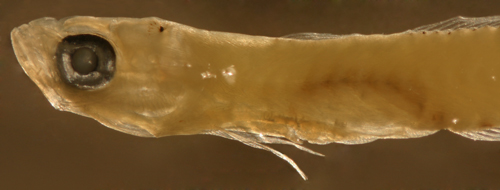 |
Ptereleotris
calliura blue dartfish (Florida and N Gulf of Mexico)
Ptereleotris
helenae Hovering dartfish (widespread)
Ptereleotris randalli bluestripe dartfish (SE Caribbean
to Brazil)
|
|
|
FAMILY ELEOTRIDAE
|
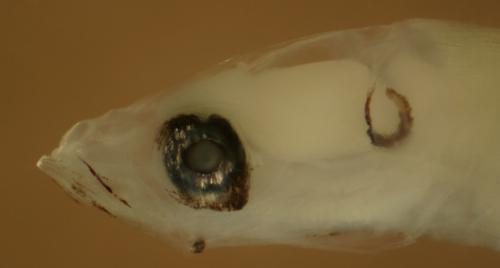
 |
| Dormitator
maculatus Fat sleeper (Cuban version= D. cubanus?)
Eleotris
amblyopsis Spinycheek sleeper (continental coastline)
Eleotris
perniger (Antilles and Central America)
Eleotris pisonis (Orinoco, Brazil only)
Erotelis
smaragdus Emerald sleeper
Gobiomorus
dormitor Bigmouth sleeper
Guavina
guavina
Leptophilypnus
fluviatilis (anadromous; Honduras to Panama, =Leptophilypnus
mindii)
Leptophilypnus guatemalensis (freshwater populations;
Guatemala, upper Rio Usumacinta)
|
|
|
FAMILY MICRODESMIDAE
|
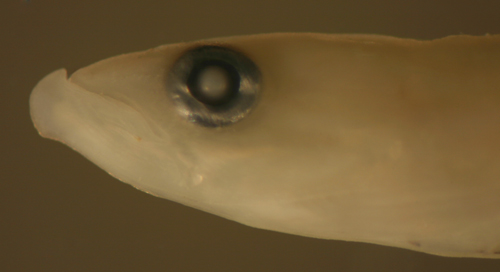 |
| Cerdale
floridana Pugjaw wormfish
Microdesmus
bahianus
Microdesmus
carri
Microdesmus
lanceolatus
Microdesmus
longipinnis Pink wormfish
Microdesmus
luscus
|
|
|
FAMILY CALLIONYMIDAE
|
|
| (excluding
deep-water species)
Callionymus bairdi (= Paradiplogrammus bairdi)
Chalinops pauciradiatus (= Diplogrammus pauciradiatus)
|
|
|
FAMILY ACANTHURIDAE
|
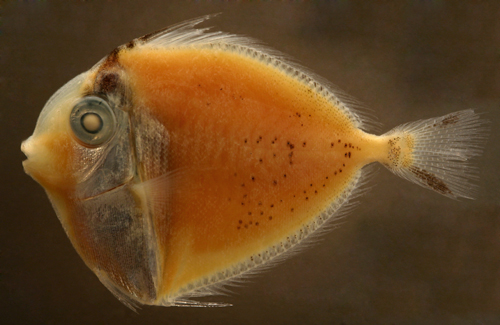 |
Acanthurus
bahianus Ocean surgeon
Acanthurus
chirurgus Doctorfish
Acanthurus
coeruleus Blue tang |
|
|
|
Balistes
capriscus Gray triggerfish
Balistes vetula Queen triggerfish
Canthidermis maculata Rough triggerfish
Canthidermis sufflamen Ocean triggerfish
Melichthys niger Black durgon
Xanthichthys ringens Sargassum triggerfish
|
|
|
|
Aluterus heudelotii
Aluterus monoceros Unicorn leatherjacket
Aluterus schoepfii Orange filefish
Aluterus scriptus Scrawled filefish
Cantherhines macrocerus American whitespotted
filefish
Cantherhines pullus Orangespotted filefish
Monacanthus
ciliatus Fringed filefish
Monacanthus
tuckeri Slender filefish
Stephanolepis
hispidus Planehead filefish (ranges unclear)
Stephanolepis
setifer Pygmy filefish (ranges unclear)
|
|
|
|
Lactophrys bicaudalis
Spotted trunkfish (= Rhinesomus bicaudalis)
Lactophrys polygonius Honeycomb cowfish (= Acanthostracion
polygonius)
Lactophrys quadricornis Scrawled cowfish (= Acanthostracion
quadricornis)
Lactophrys trigonus Buffalo trunkfish
Lactophrys triqueter Smooth trunkfish (= Rhinesomus
triqueter) |
|
|
|
Canthigaster figueiredoi
(SE Caribbean to Brazil)
Canthigaster jamestyleri (deep Gulf of Mexico)
Canthigaster rostrata Sharpnose Puffer
Colomesus psittacus Banded Puffer (brackish water,
S American coastline)
Lagocephalus laevigatus Smooth Puffer
Lagocephalus lagocephalus Oceanic Puffer
Sphoeroides dorsalis
Sphoeroides georgemilleri (Colombia)
Sphoeroides greeleyi Green Puffer (Belize to Brazil)
Sphoeroides nephelus Southern Puffer
Sphoeroides pachygaster (worldwide, pelagic, deep-water)
Sphoeroides parvus (Gulf of Mexico)
Sphoeroides spengleri Bandtail Puffer
Sphoeroides testudineus Checkered Puffer
Sphoeroides tyleri (Colombia to Brazil)
Sphoeroides yergeri Speckled Puffer (Belize to
VZ)
|
|
|
|
Chilomycterus
antennatus
Chilomycterus antillarum Web Burrfish
Chilomycterus reticulatus (= Chilomycterus atinga
or atringa) Spotted Burrfish
Chilomycterus schoepfii Striped Burrfish (Florida
and GOM)
Diodon eydouxii (worldwide, offshore pelagic only)
Diodon holocanthus Balloonfish (circumtropical)
Diodon hystrix Spot-fin Porcupinefish (circumtropical)
|
|
|
awaiting inclusion
|
Coryphaenidae
Coryphaena equiselis Pompano dolphinfish
Coryphaena hippurus Common dolphinfish
|
|
| |
|
 |
|
All contents © copyright 2006-2015
All rights reserved
www.coralreeffish.com by Benjamin
Victor
|
|
|
|
|
|
